Best reverb pedals 2025: Our pick of reverb effects for your pedalboard
From subtle to extreme, these are our reverb top picks right now
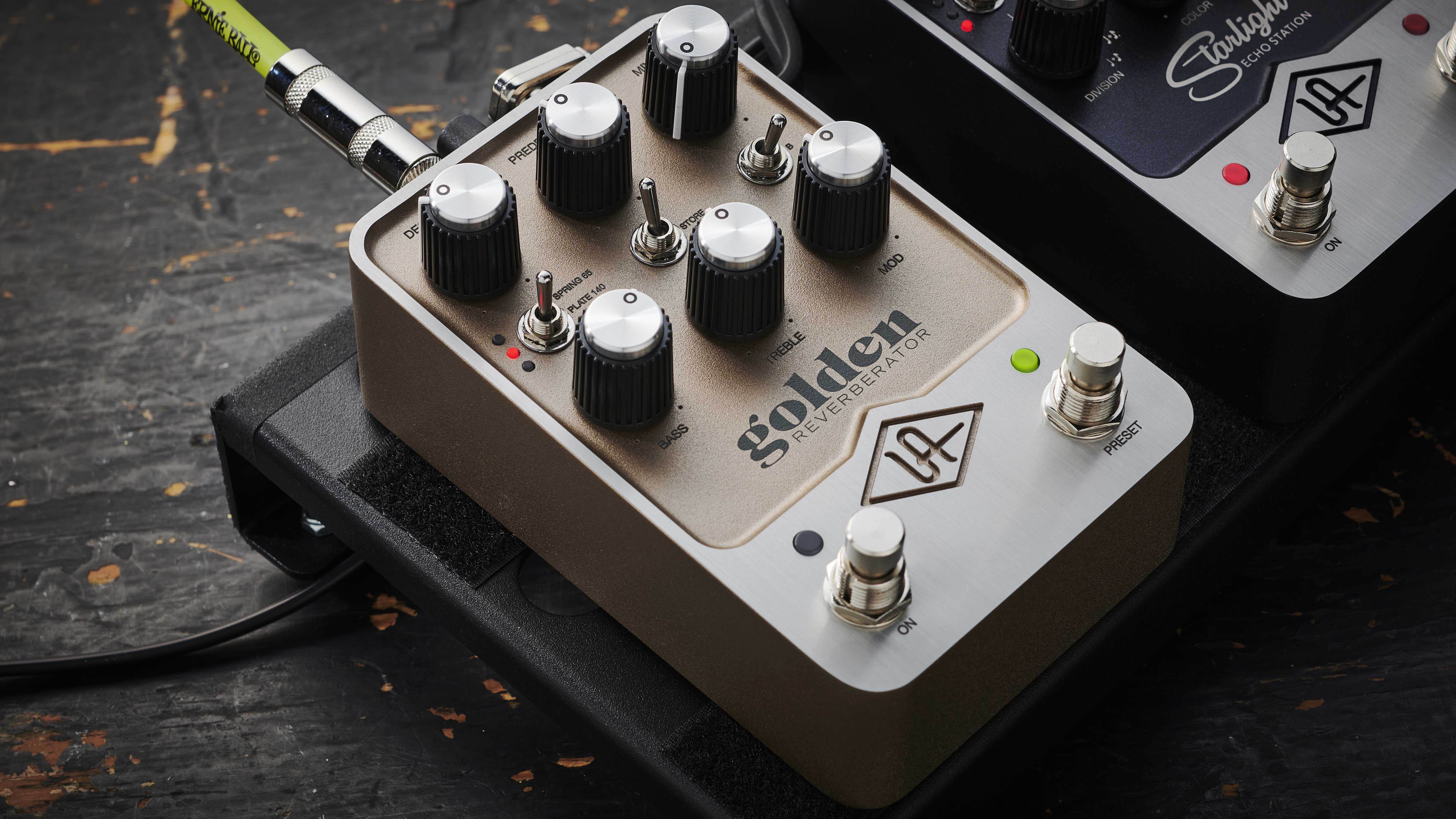
Reverb is one of those effects that’s a must-have on any guitar player's pedalboard – it's essential and inspiring. Use it to subtly add warmth, or just launch your guitar tone to the far reaches of the cosmos, but no matter what style of music you play you’ll find a use for this effect. The best reverb pedals combine ease of use, tweakability, and most importantly, great sound. It’s one of the most popular effects not just for guitar, but for music as a whole.
A reverb pedal simulates a space for the sound of your guitar to occupy. When you clap your hands in a large room, you’ll hear the sound of your clap bouncing off the walls and surfaces of the area around you. A reverb pedal does the exact same thing for your instrument, artificially recreating the sound as it if it were happening in that space.
There’s a ludicrous amount of reverb pedals available, doing everything from warm room tones and period-accurate spring reverbs, right through to ambient modulated synth sounds that reverberate infinitely. Choosing the best reverb pedal for you can be tough, so it’s important to do your research before pulling the trigger, especially as the majority of the pedals are relatively expensive.
If you’re looking for more knowledge before you pull the trigger, then head down to the bottom of this article for some of our expert buying advice. If you just want to get started, keep scrolling to see our top picks.
Best reverb pedals: Our top picks
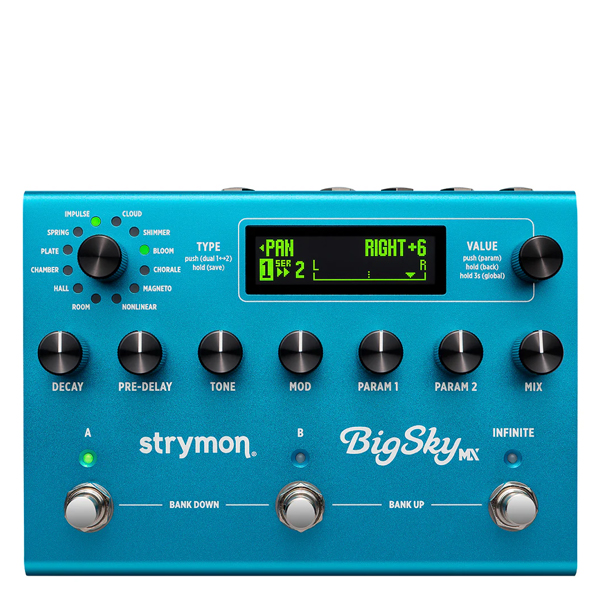
The BigSky has fast become the weapon of choice for many pro players and, will undoubtedly be the best reverb pedal for you if you're in a position to stump up the considerable funds. Why? It's flexibility is astounding and considering the borderline academic nature of Strymon's research, you'd be disappointed if the BigSky sounded anything less than extraordinary.
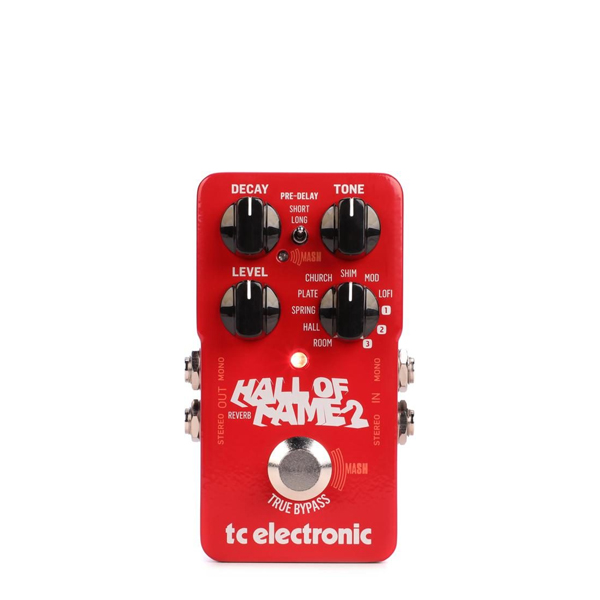
The Hall Of Fame 2 picks up where it left off, bringing a new shimmer octave reverb mode to the table and adding a ‘MASH’ footswitch that functions somewhat like an expression pedal. What remains are the quality of reverb sounds, which are simply fantastic and cover all the bases you could wish for.
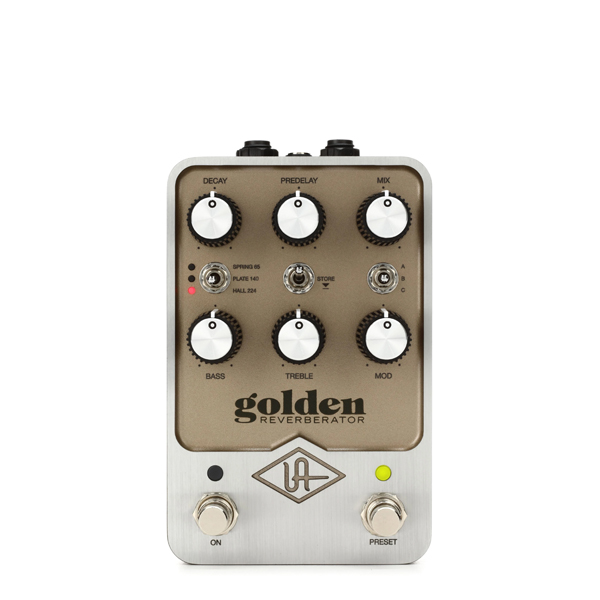
When it comes to premium digital emulations of classic studio and amp reverbs in one portable place on your 'board, this Universal Audio pedal sets the standard. Three different choices in each category of spring, plate, and hall reverbs can be found here, channeling the company's plugin prowess into pedal form for the first time.
Best overall
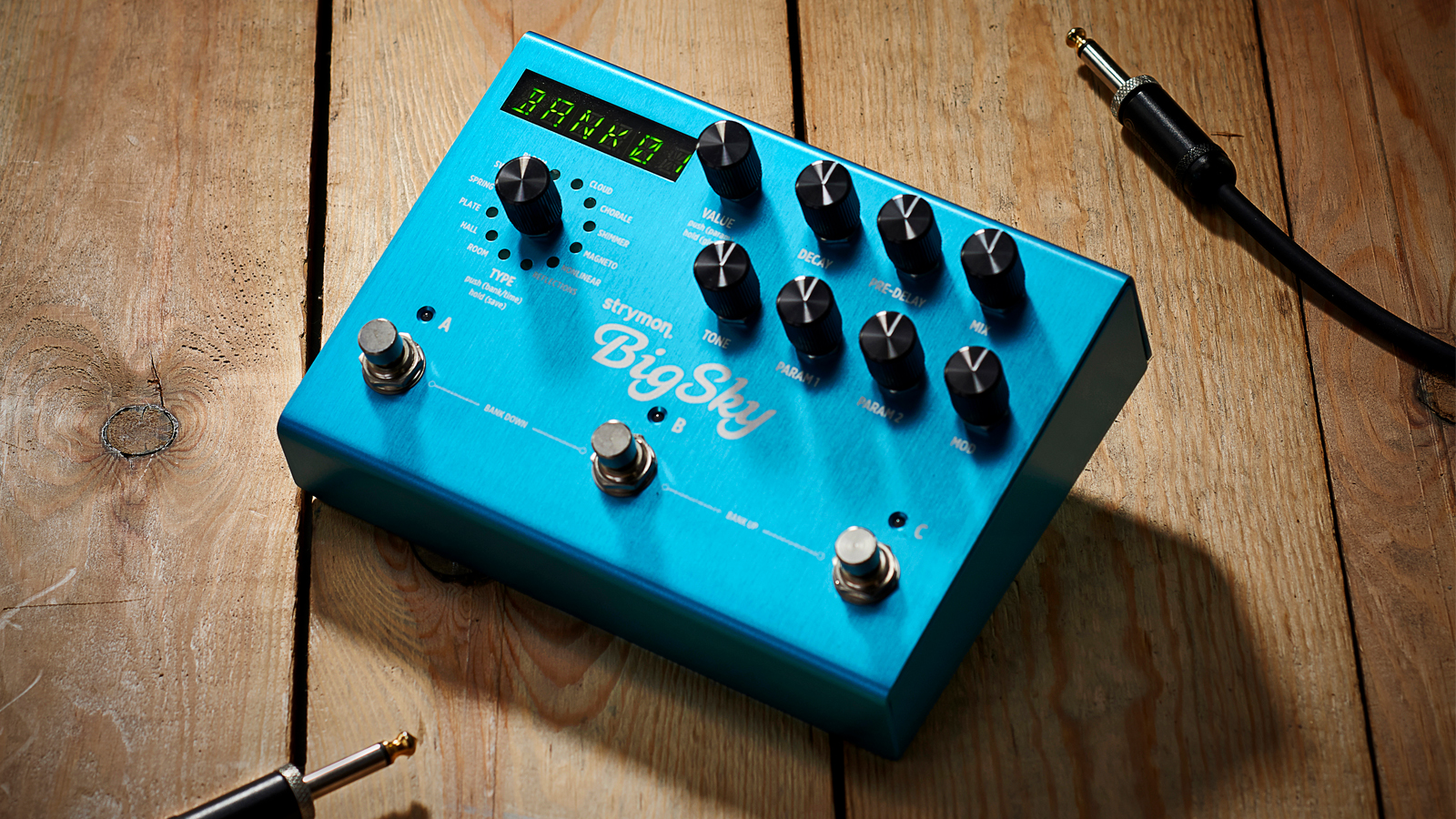
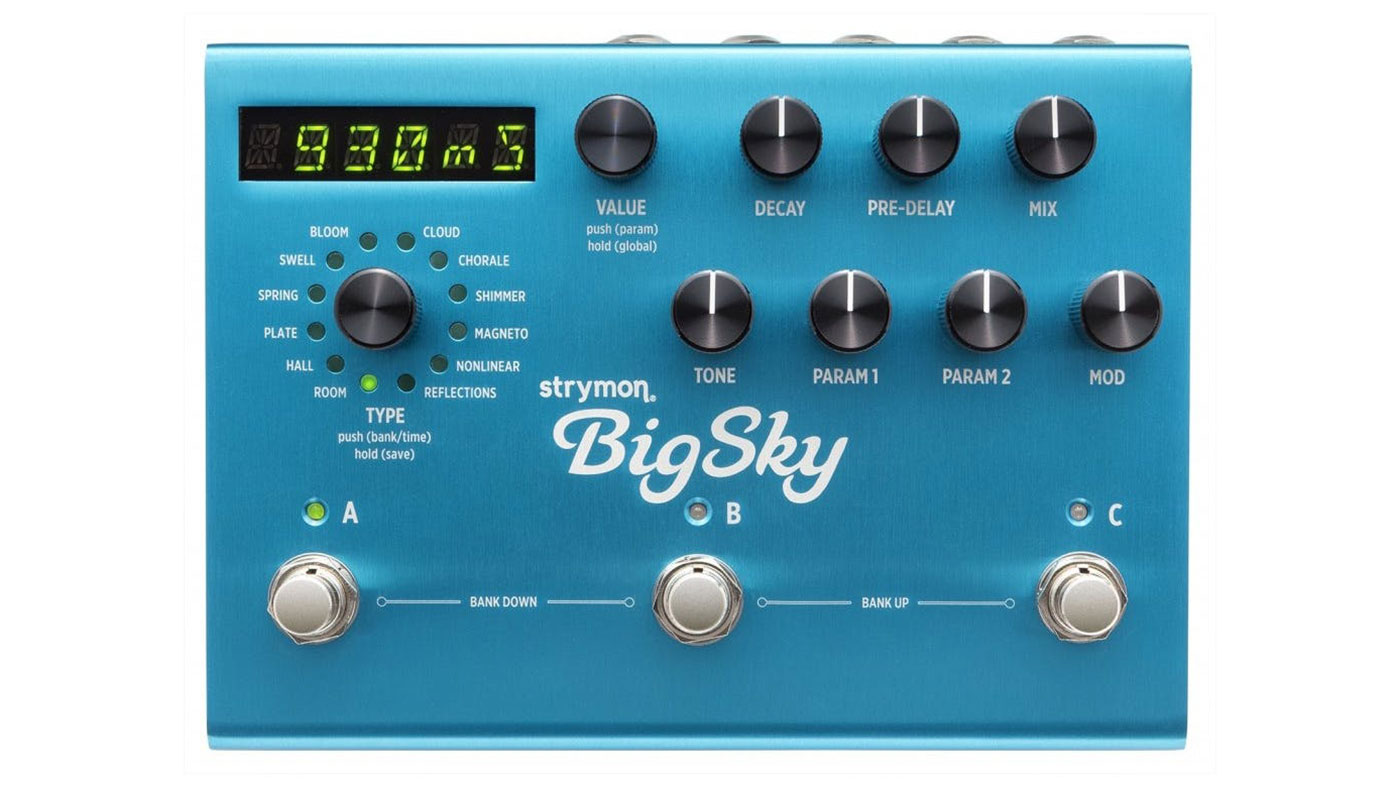
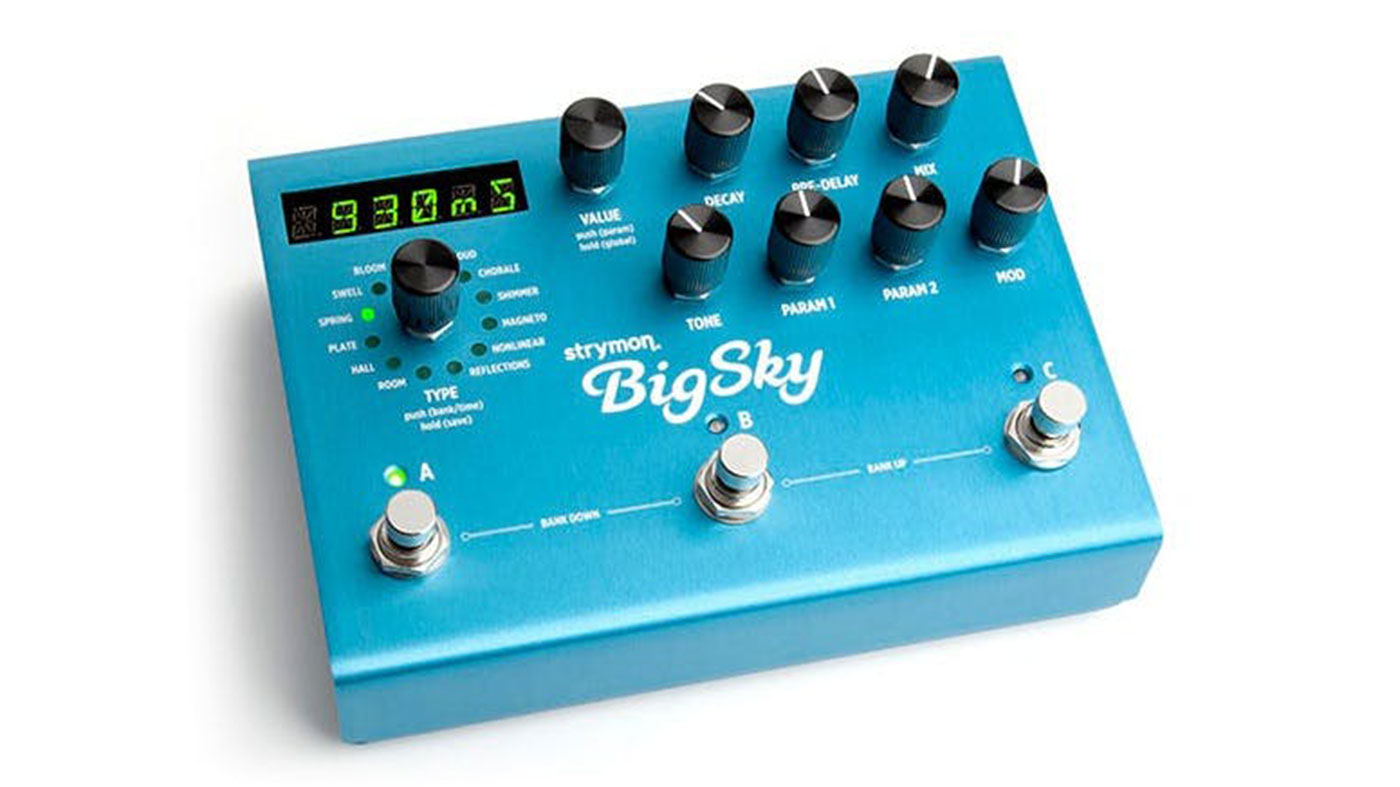
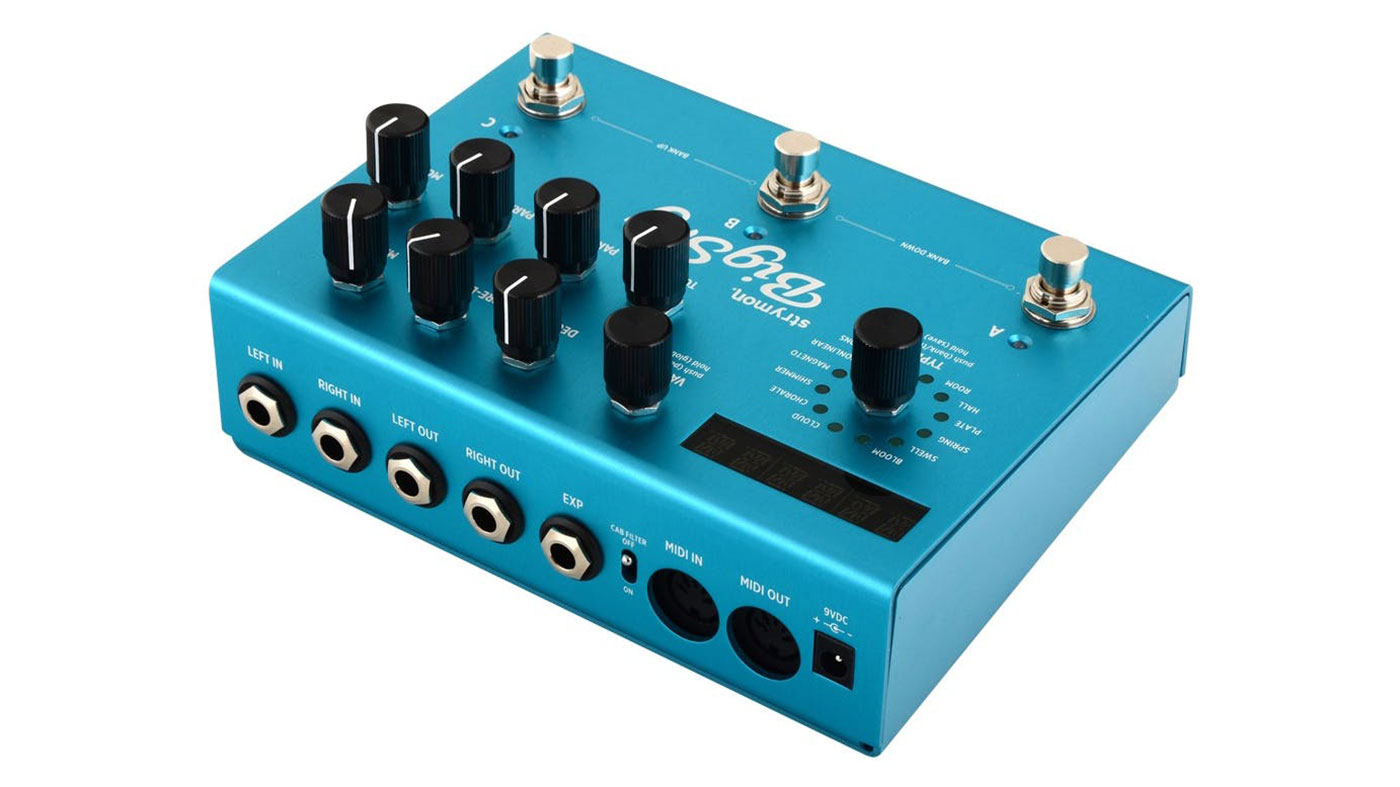
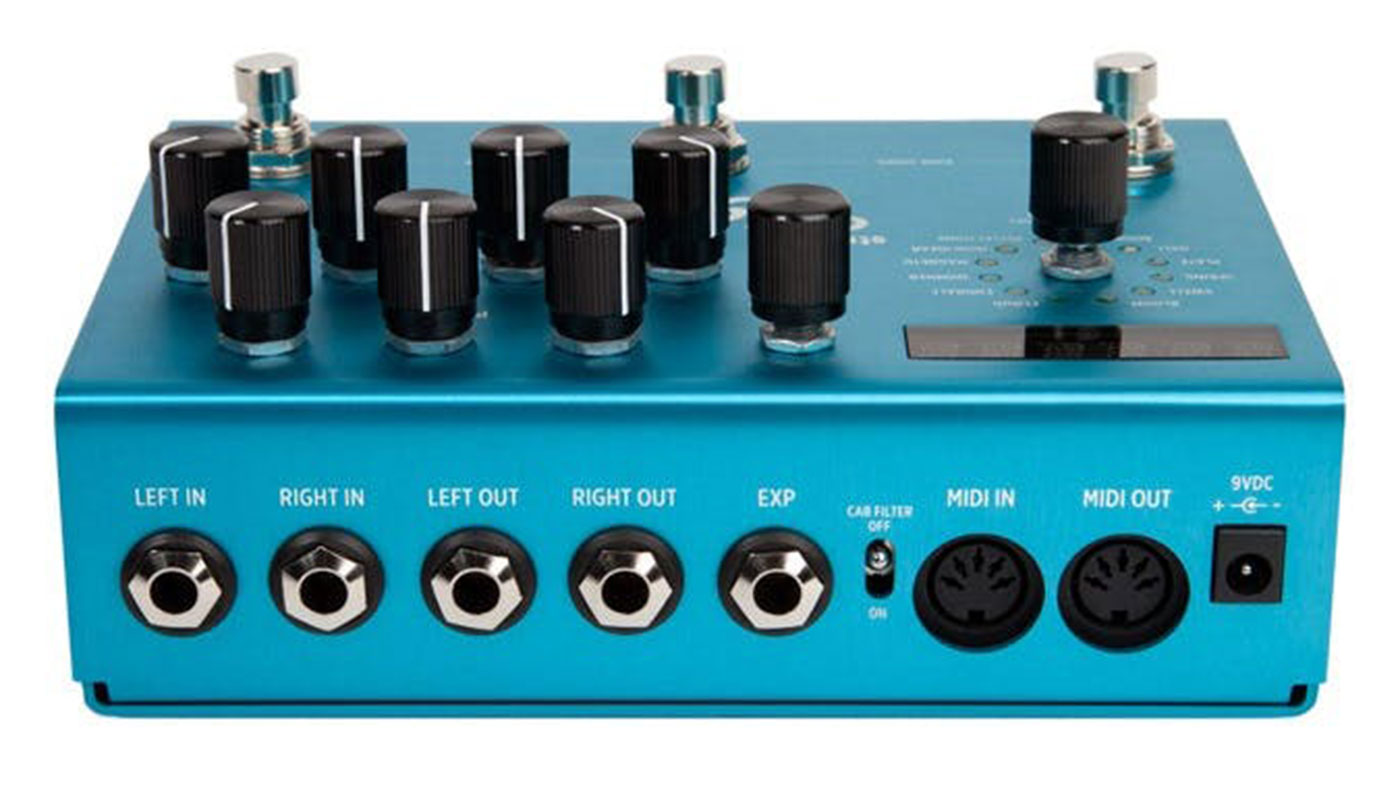
Specifications
Reasons to buy
Reasons to avoid
The BigSky has fast become the weapon of choice for many pro players and, will undoubtedly be the best reverb pedal for you if you're in a position to stump up the considerable funds. Why? It's flexibility is astounding and considering the borderline academic nature of Strymon's research, you'd be disappointed if the BigSky sounded anything less than extraordinary.
All that homework paid off: the 12 on-board reverb machines are as natural or fantastical as you want. The atmospheric settings have made it a favourite among the post-rock crowd, but this is a pedal that is capable of endless adaptation – and convincing with it, too.
The functionality is staggering, but it's the sounds that will make your jaw drop and your playing soar – and it's that which helps Strymon justify the lofty asking price. If you're looking for 'the one', this is it.
Read our full Strymon BigSky review
Best on a budget
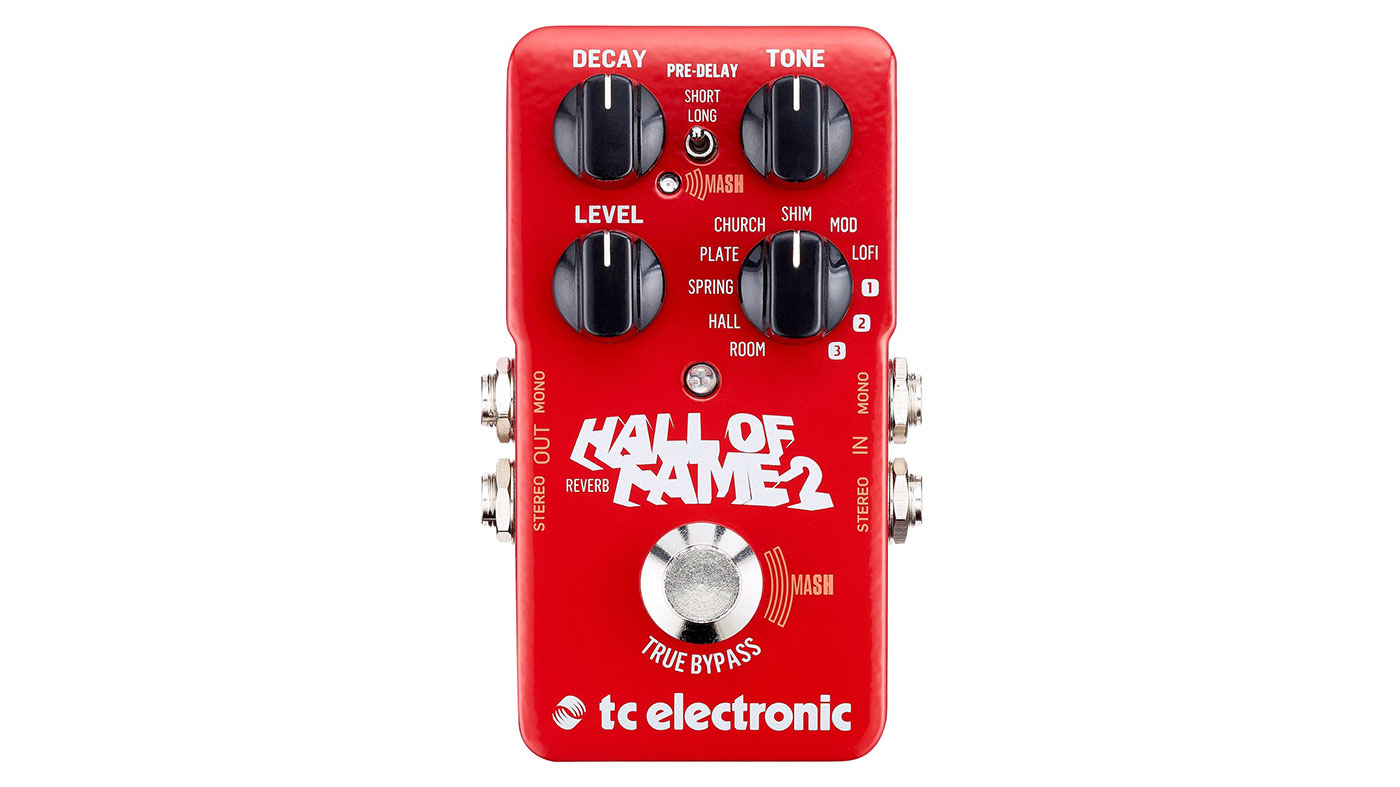
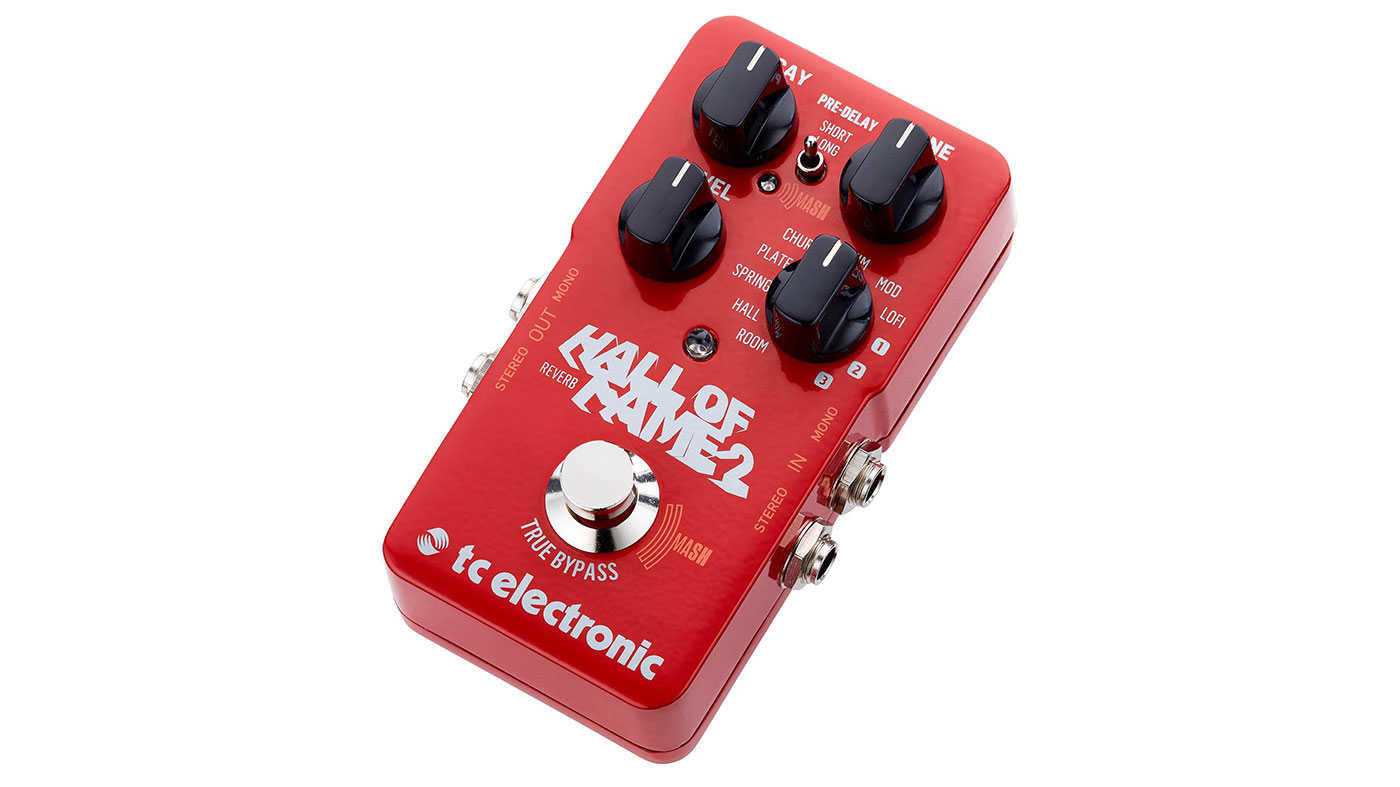
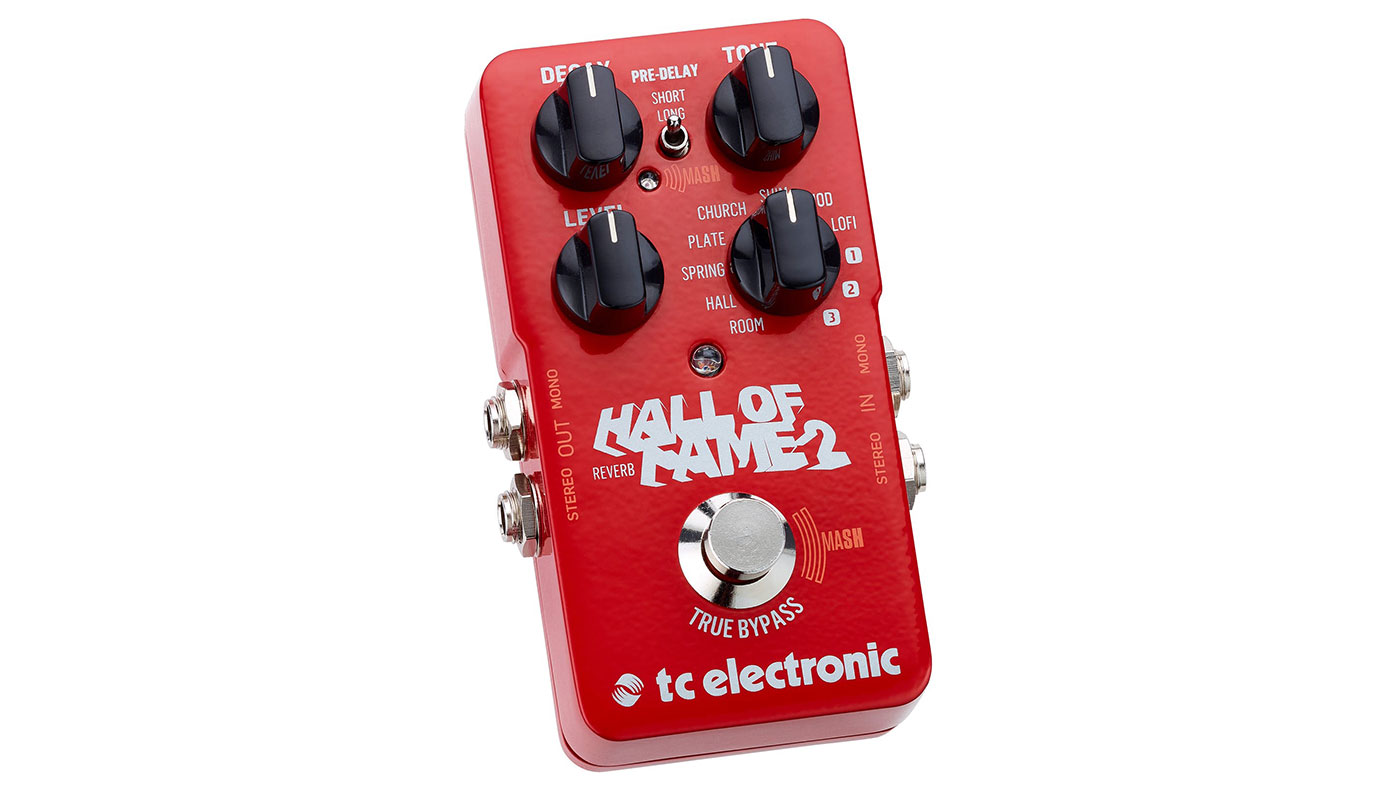
Specifications
Reasons to buy
Reasons to avoid
The original Hall Of Fame reverb pedal adopted a kitchen-sink approach with multiple options and the addition of TonePrint (which enables you to download user-made profiles for other reverbs) for even greater functionality and flexibility.
The Hall Of Fame 2 picks up where it left off, bringing a new shimmer octave reverb mode to the table and adding a ‘MASH’ footswitch that functions somewhat like an expression pedal. What remains are the quality of reverb sounds, which are simply fantastic and cover all the bases you could wish for.
Read our full TC Electronic Hall Of Fame 2 review
Best studio verb
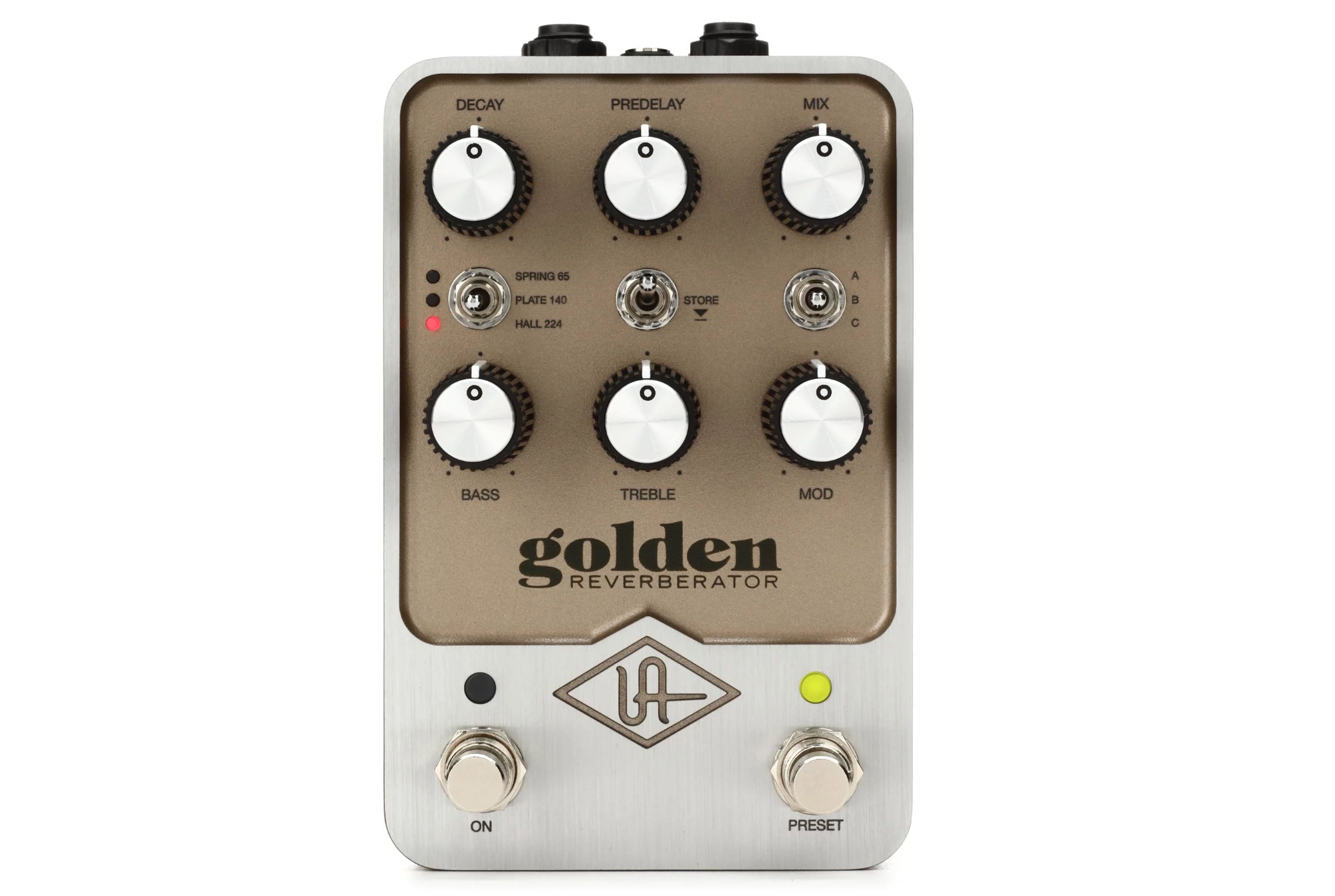
Specifications
Reasons to buy
Reasons to avoid
When it comes to premium digital emulations of classic studio and amp reverbs in one portable place on your 'board, this Universal Audio pedal sets the standard. Three different choices in each category of spring, plate and hall reverbs can be found here, channeling the company's plugin prowess into pedal form for the first time.
In addition to the nine onboard algorithms including those based on classic Fender spring reverb tanks and the EMT 140 plate reverb, users can download three more (two additional 224 plate and chamber reverbs) via the UA Control app.
The level of control over frequency response is great for maintaining clarity in a mix and the scope of the predelay allows players to fine-tune their picking attack in the context of gorgeous, detailed reverb emulations that would cost thousands in their original hardware form. If you need these tried and true kinds of reverbs in your recordings and live sound, the Golden Reverberator is worth the investment.
Read our full Universal Audio UAFX Golden Reverberator review
Best digital reverb
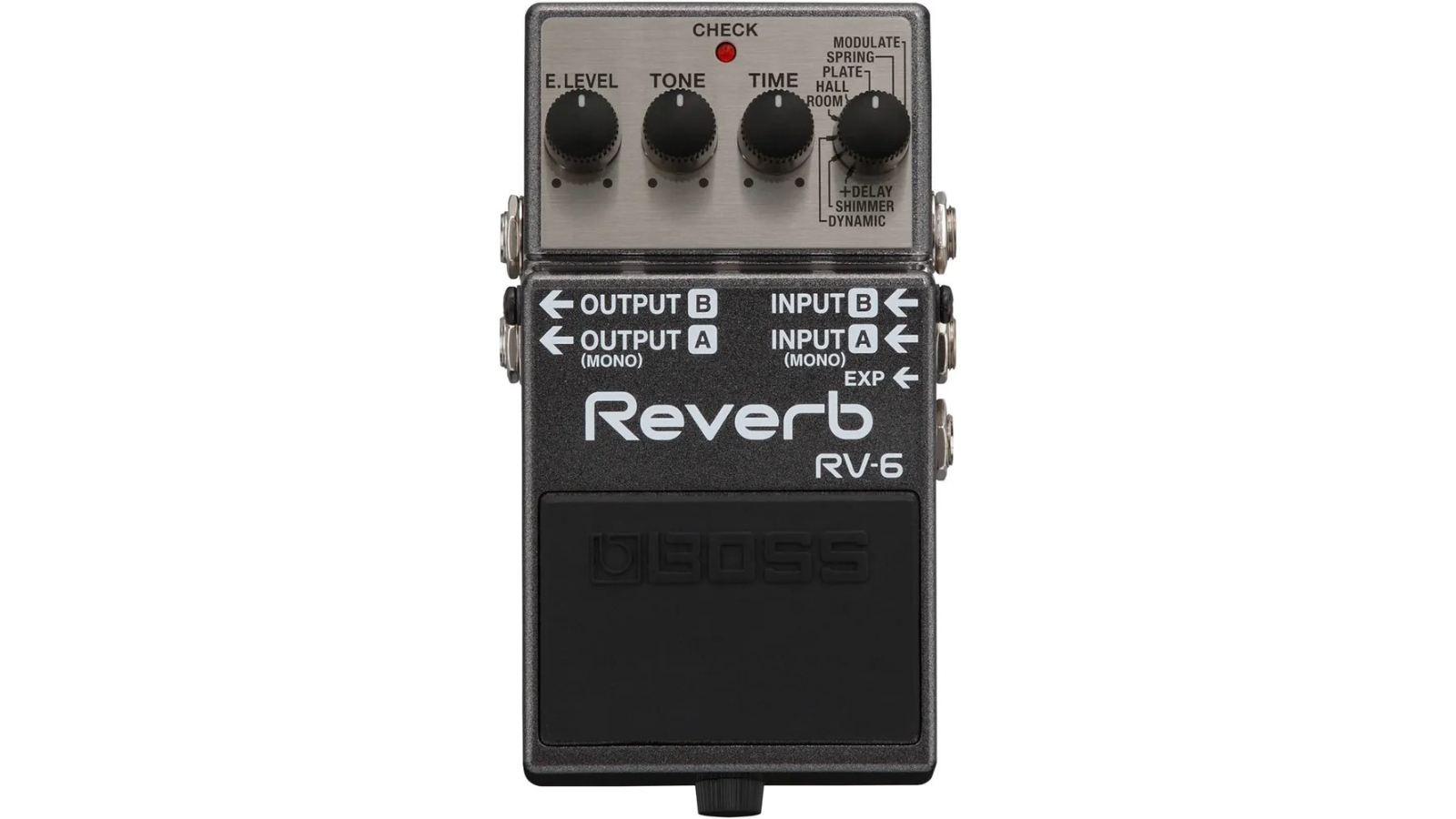
Specifications
Reasons to buy
Reasons to avoid
The Boss RV-6 is a massive improvement over its predecessor, offering all-new algorithms and a totally updated DSP. We’ve had one of these on our ‘board for years now, and considering the number of reverb types you get for the money, it’s without a doubt one of the best reverb pedals out there.
We particularly love the shimmer mode with its angelic chorus of octave-up voices adding a synth-like quality to your guitar tone. The modulated mode is fantastic as well, adding a dark, warm wash with a lovely movement to it to your sound. You get a dynamic mode that responds to your playing touch, and even a nice delay plus reverb to throw in the mix.
The expression pedal input is really handy for adding swells or controlling the amount of ‘verb on the fly, and the whole thing is in a standard Boss casing that’s rugged and reliable. The spring mode is a little splashy we’ll admit, but considering how good the rest of the reverbs are, it’s a small price to pay.
Read the full Boss RV-6 review
Best for shoegaze
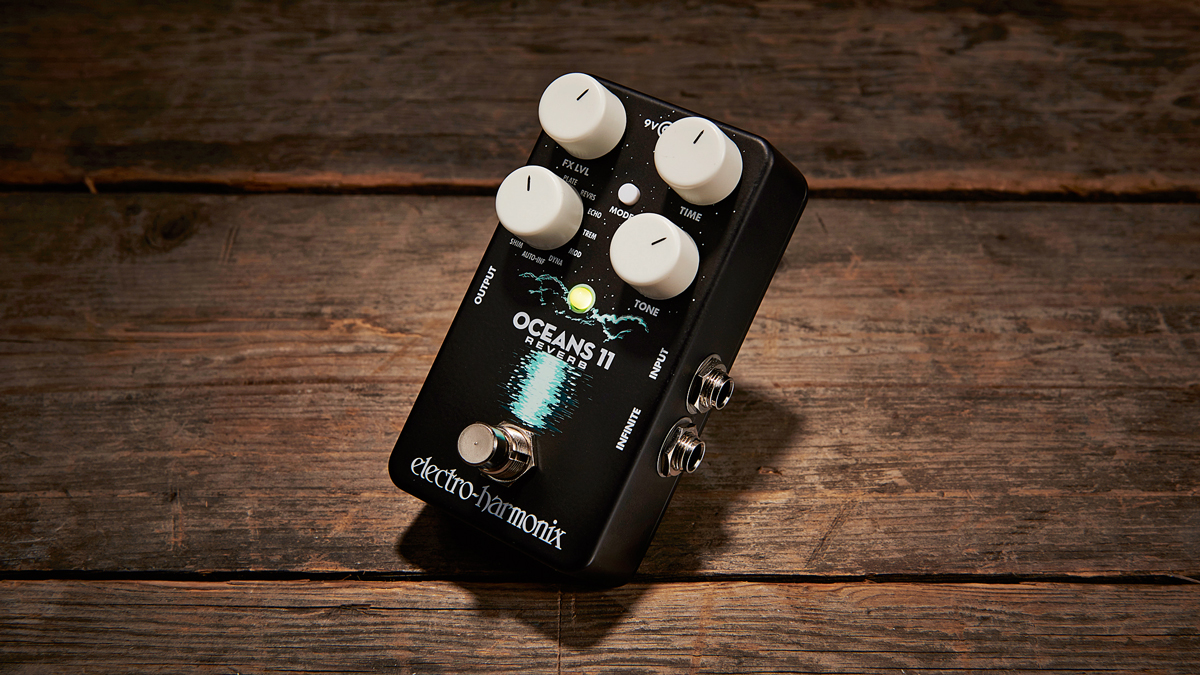
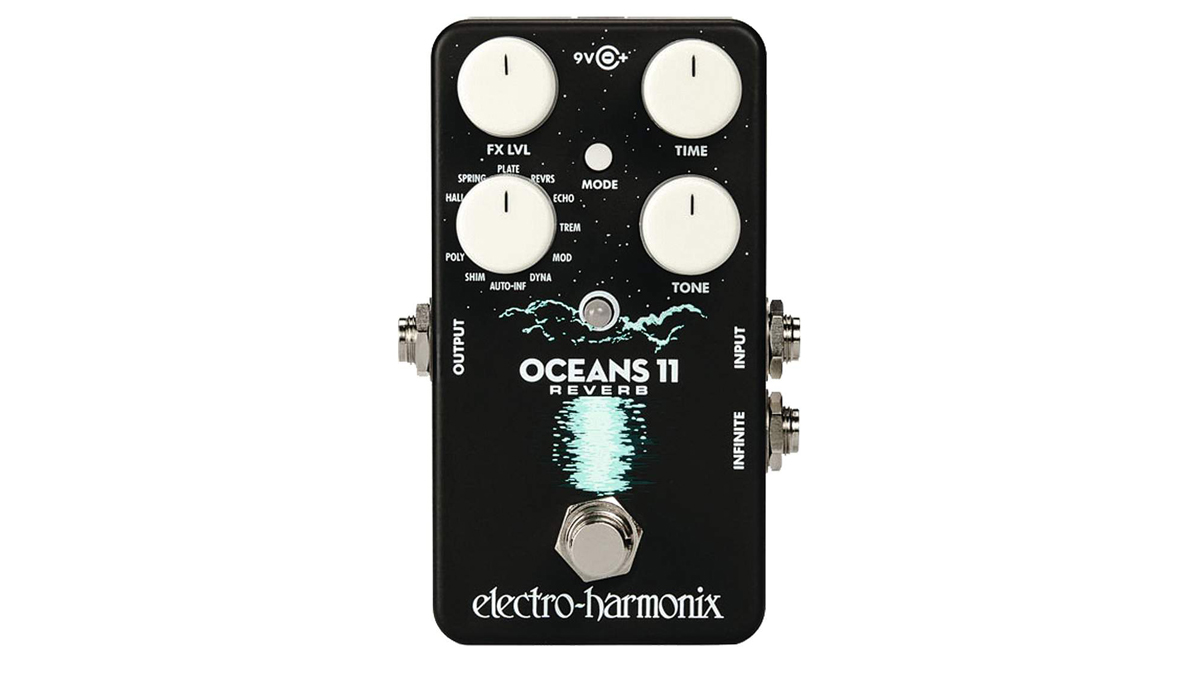
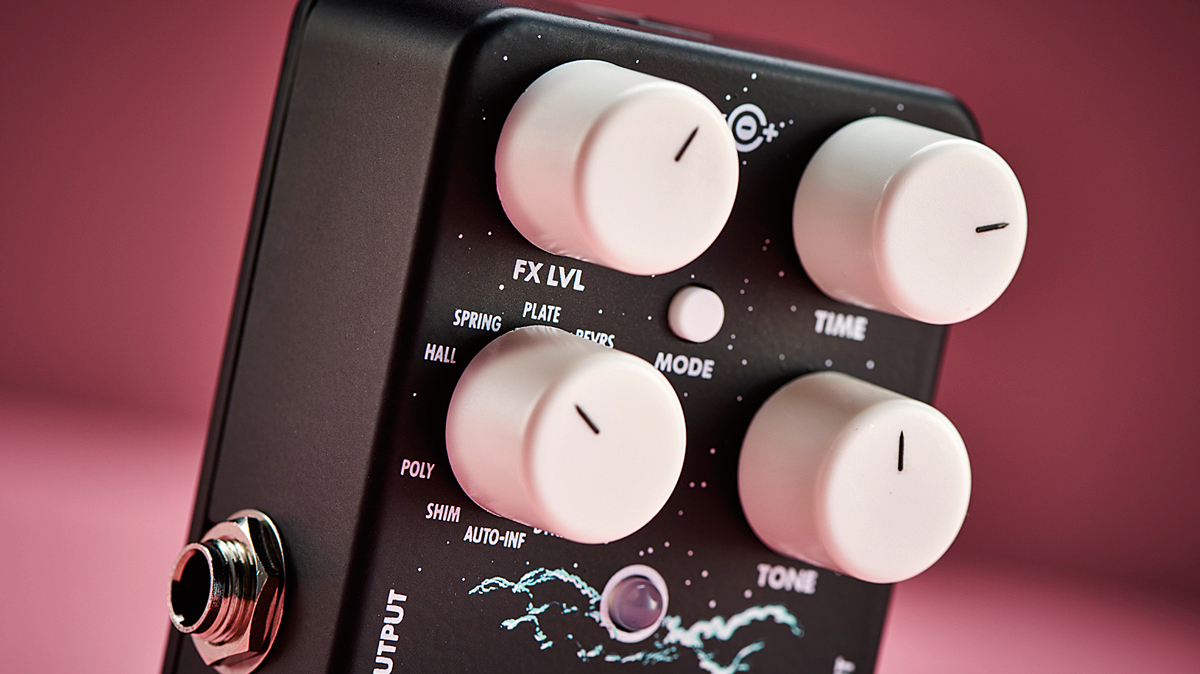
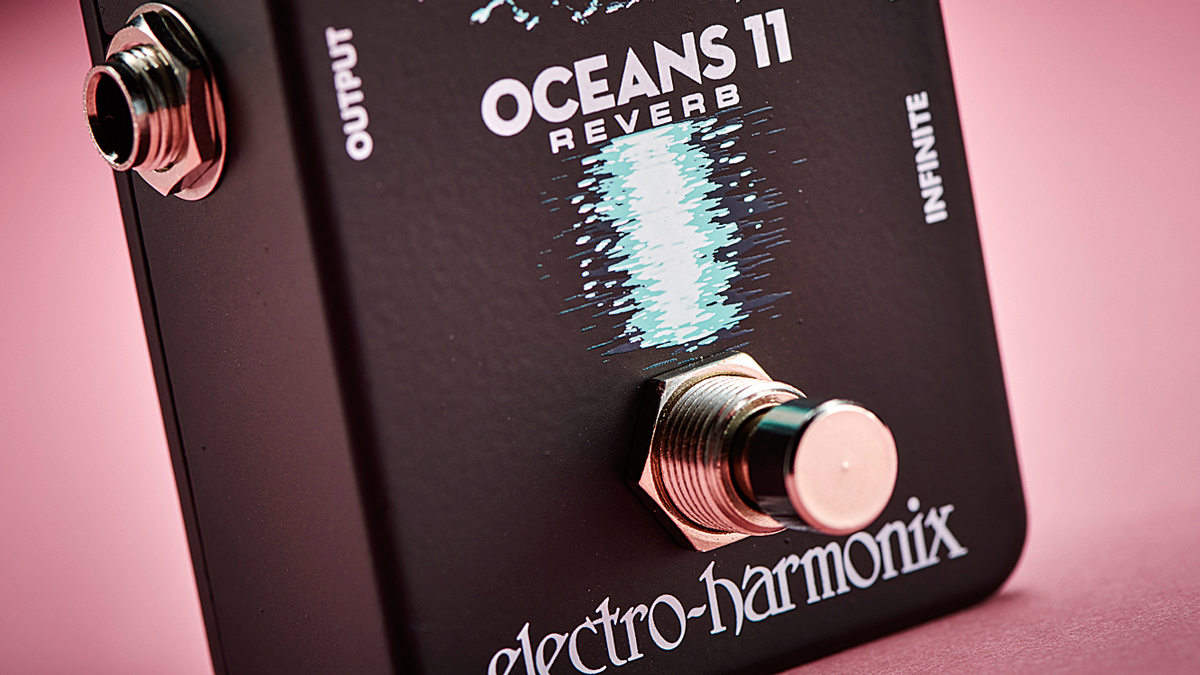
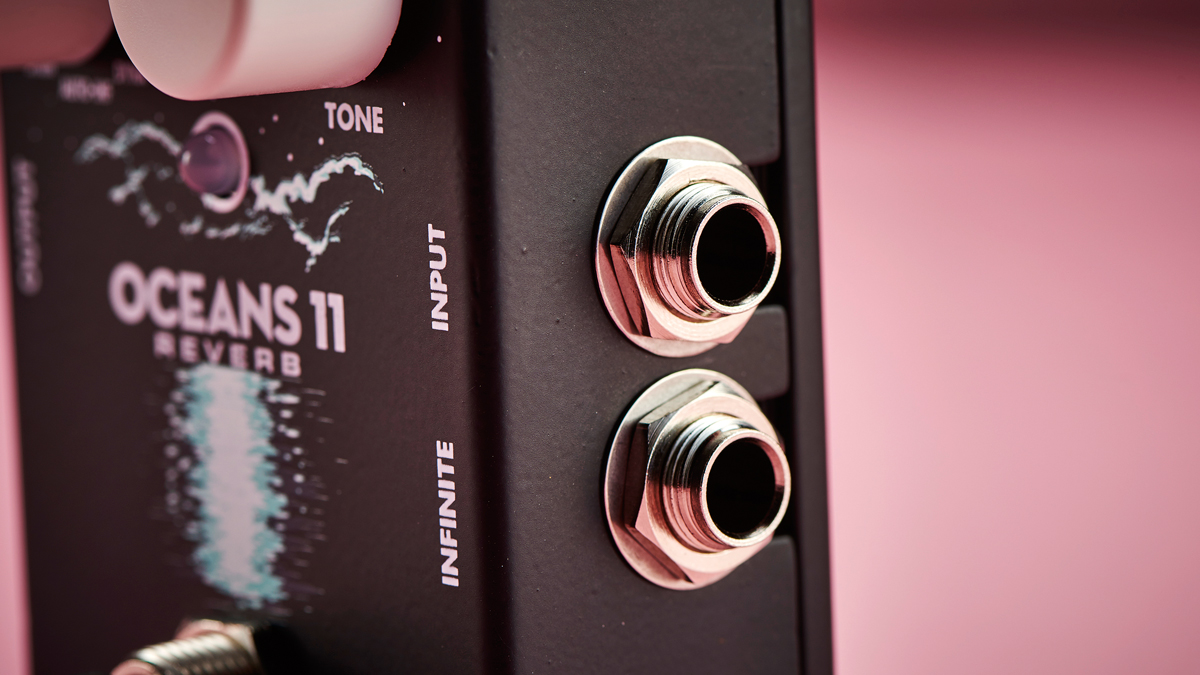
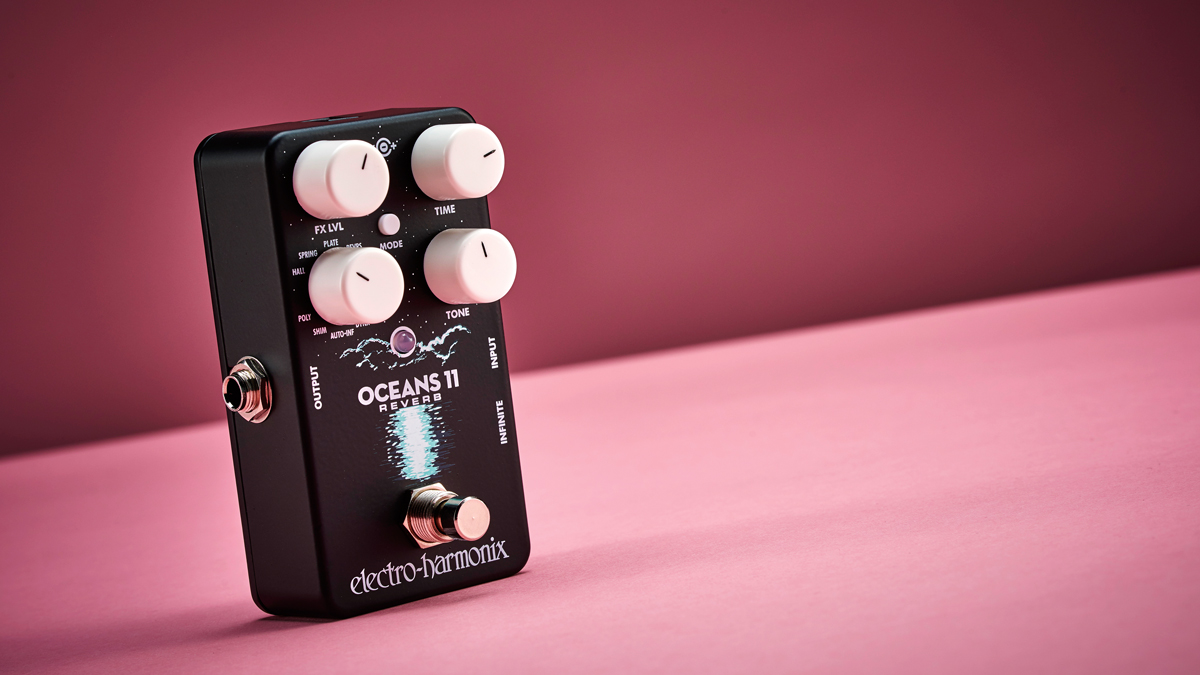
Specifications
Reasons to buy
Reasons to avoid
Given the price, you might not expect much of the Oceans 11, but don’t underestimate it. There’s a plethora of settings, from mod and shimmer, to the wild polyphonic octave, but also a rogue’s gallery of standard options like echo, plate, spring, hall and reverse.
While reverse has been out-of-vogue on compact pedals, the demand from shoegazers has remained, and the 11 is likely to be a hit based on this mode alone. It’s a brilliant effect, whether you’re playing psychedelic music or just looking to throw in a wacky solo. The core hall and plate sounds are excellent, too, so it’s not just a one-trick pony.
Read our full Electro-Harmonix Oceans 11 Reverb review
Best spring reverb
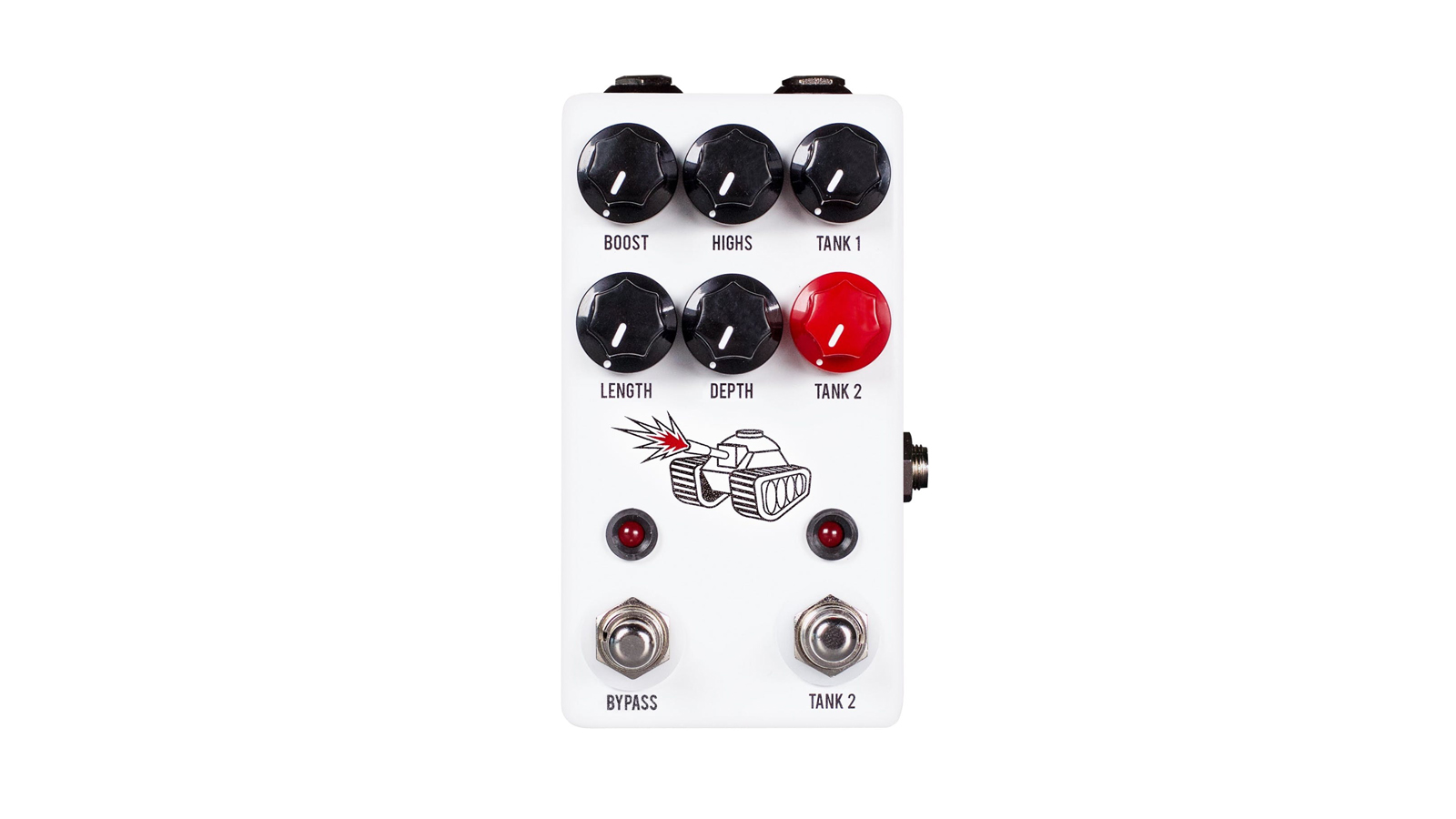
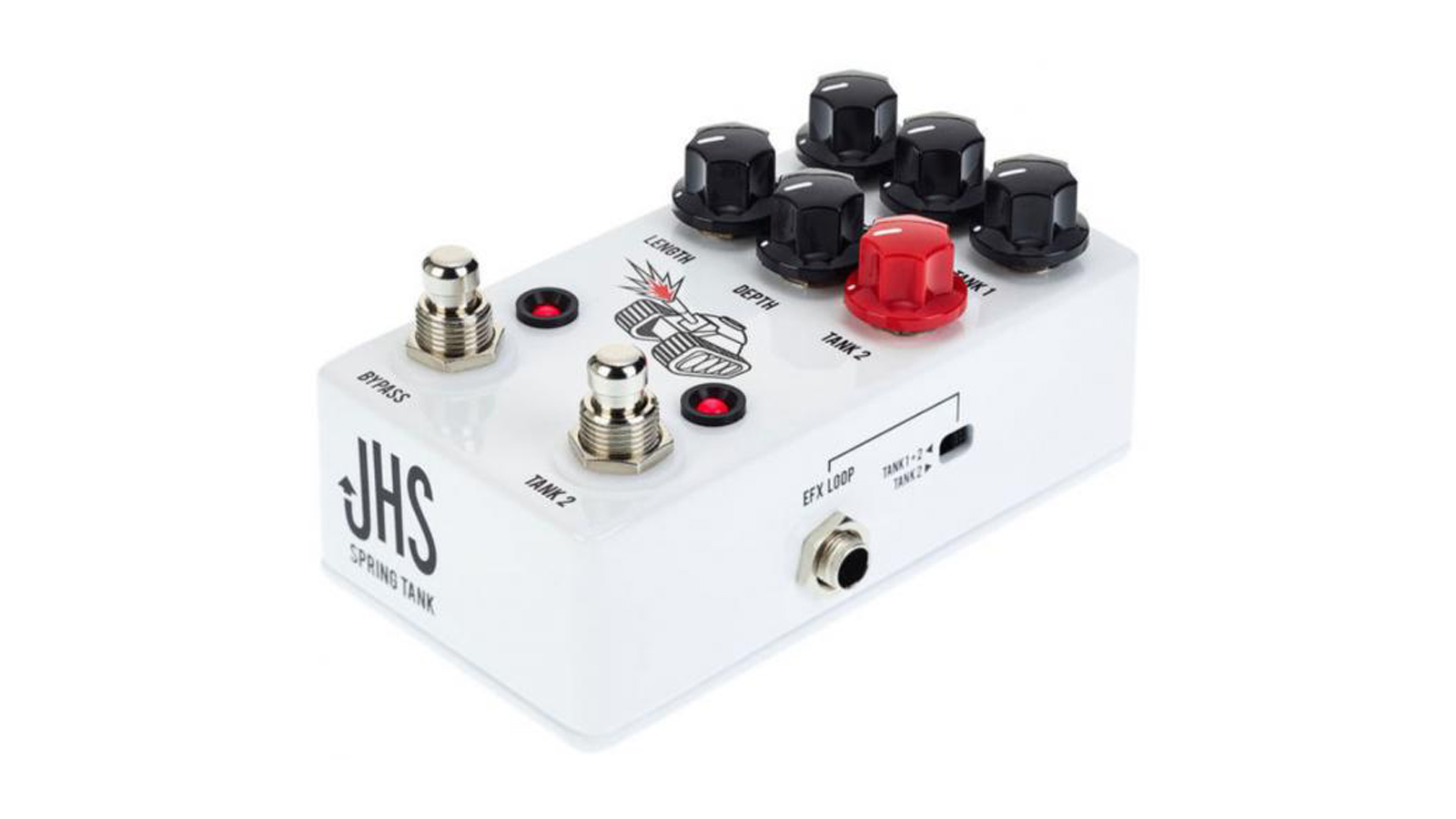
6. JHS Spring Tank
Our expert review:
Specifications
Reasons to buy
Reasons to avoid
We found that this is one of the most comprehensive spring reverb pedals out there. It recreates the glorious sound of a spring vibrating inside of a reverb tank that helped define the sound of rock and roll in the early days. It can be used as a subtle, always-on pedal that will work for any style of music or player, or as a wild, in-your-face reverb effect. What’s great about the Spring Tank is that you can have both of these settings dialled in, and switch between them via the additional footswitch.
The pedal allows you to choose the length of the reverb tail, and also the size of the ‘room’, plus you have the ability to cut some of the high frequencies, and boost your signal above, or below the reverb trail.
There’s even an effects loop built into the pedal so you can add modulation to your reverb tails for some really unique sounds. However you use it, this is one of the best spring reverb-style pedals around.
Best for versatility
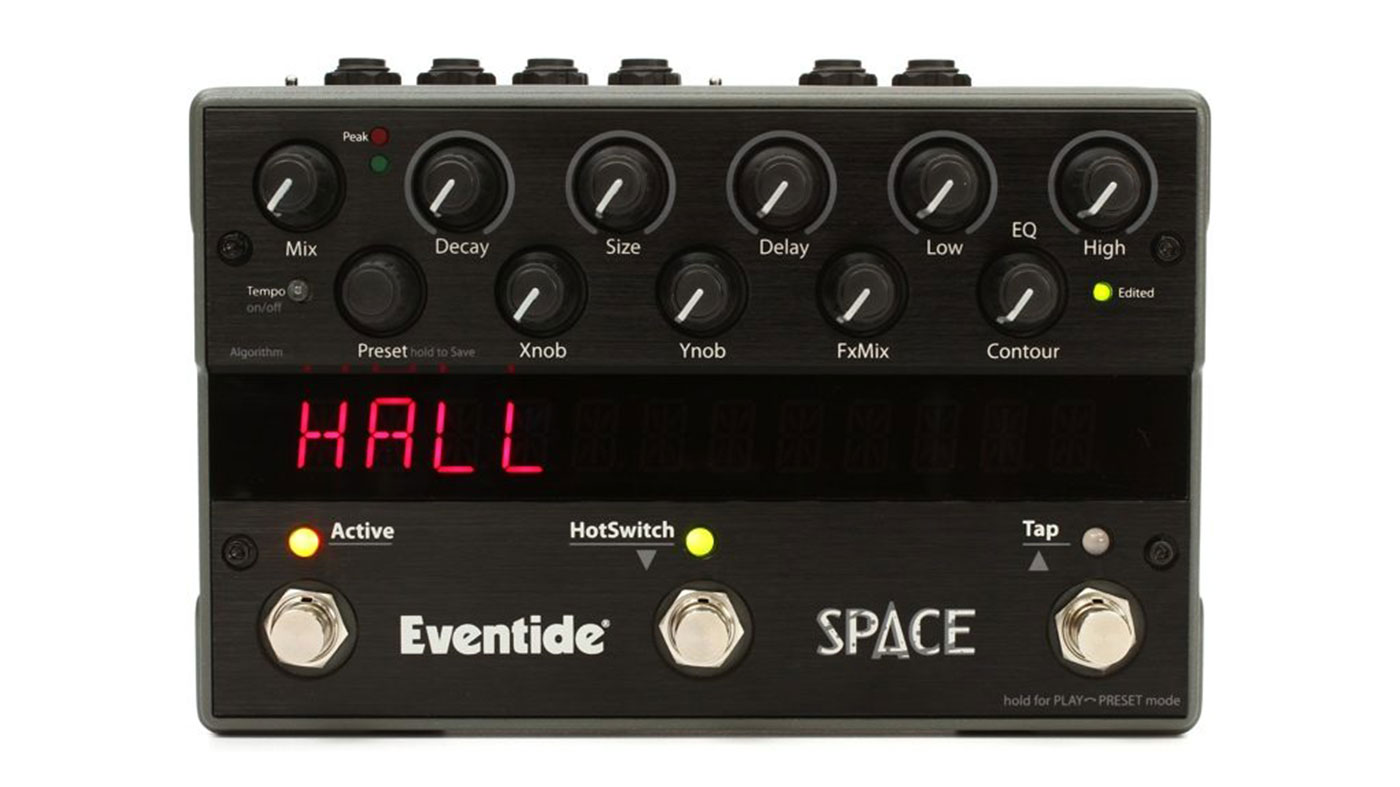
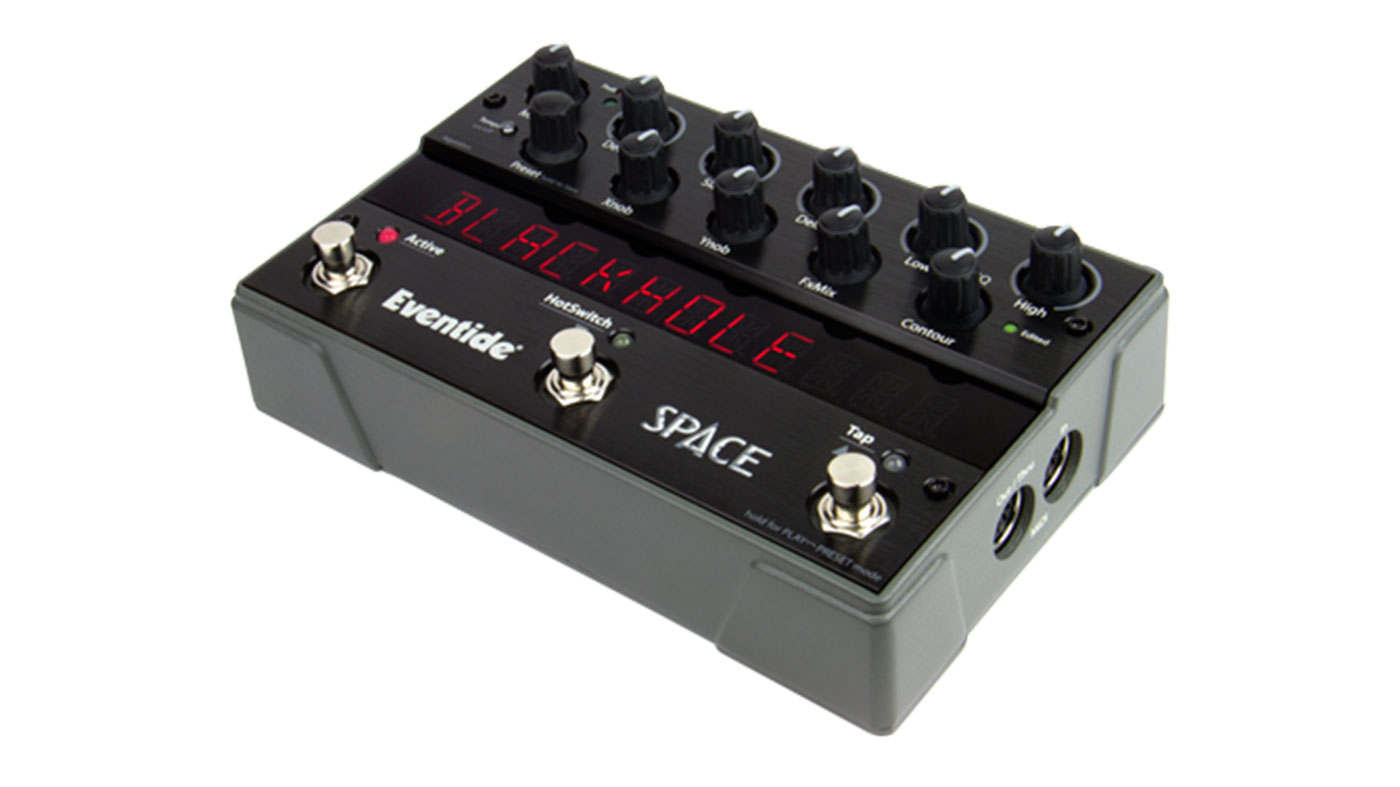
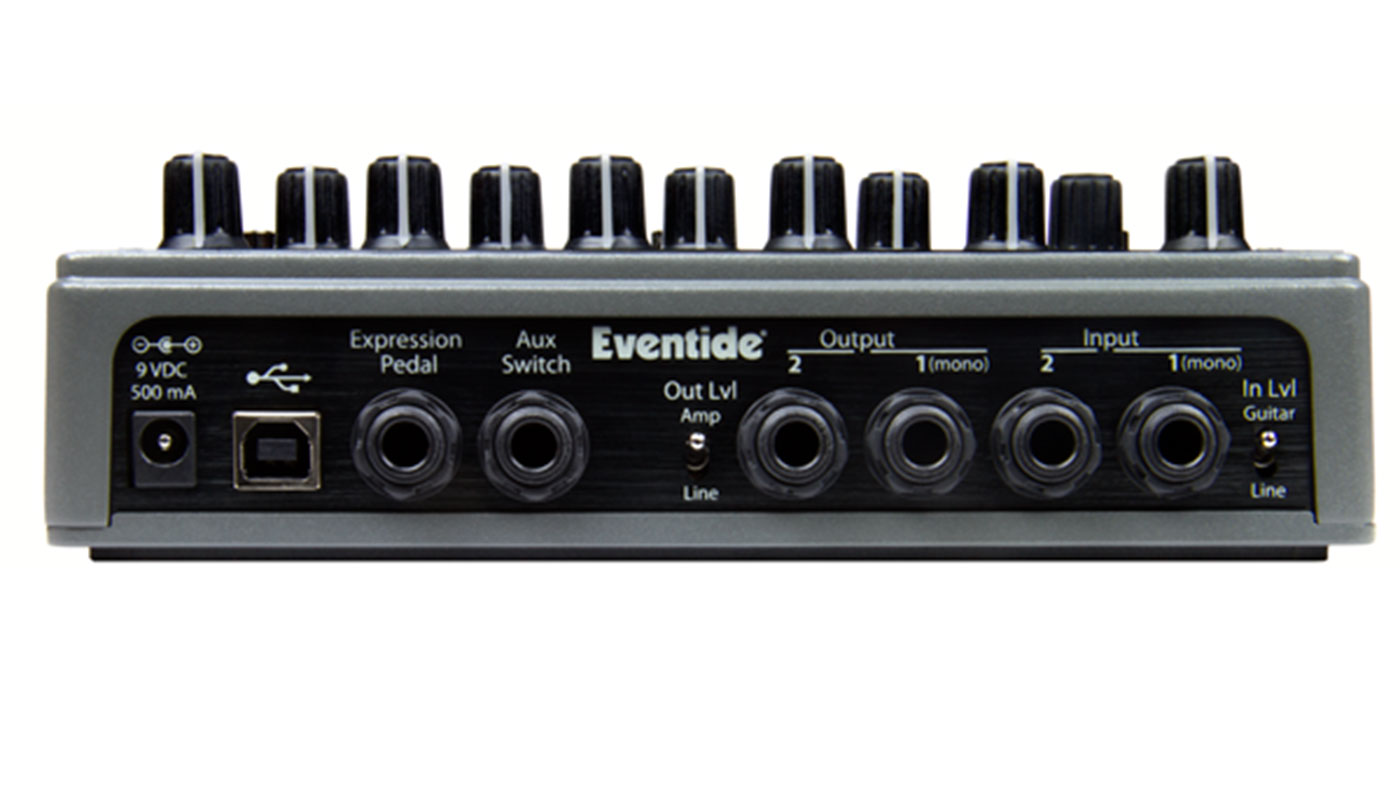
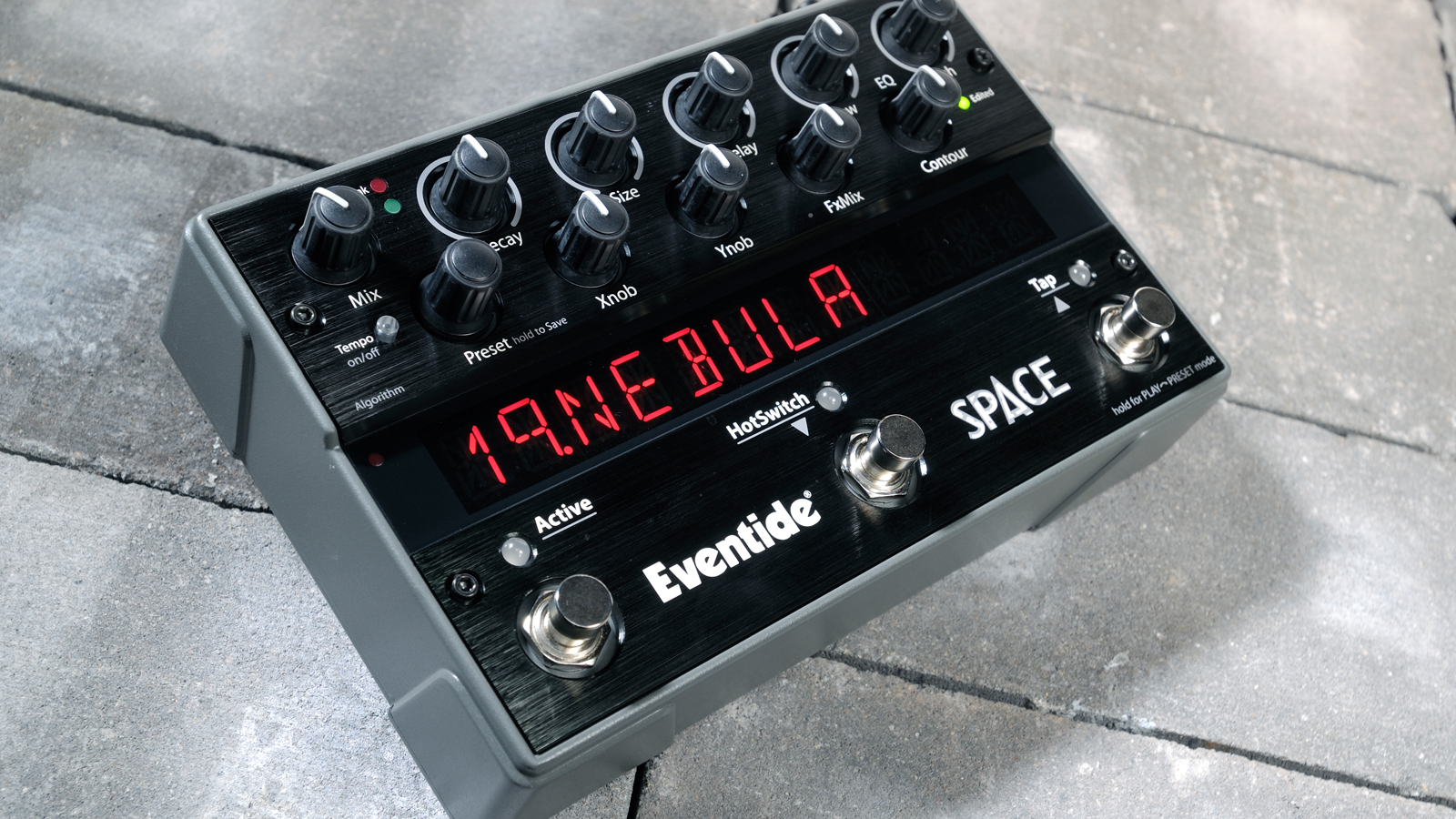
Specifications
Reasons to buy
Reasons to avoid
What you get with Space is 12 effects from the Eventide H8000FW and Eclipse V4 rackmount processors. Some of them are pure reverb, but others are combinations where it's paired with delays, pitch-shifting, tremolo, modulation and spatial effects.
If you want a stompbox for reverb and other ambient effects, we found that the Space is the most comprehensive around and if you have a home studio, you'll get tons more out of this in stereo.
The price may be high, but rather than compare the Space to other stompboxes, think instead of how much a rackmount reverb processor or the best quality plug-ins cost, and suddenly it doesn't seem that bad a deal, especially when Space sounds so good.
Read our full Eventide Space review
Best dual reverb
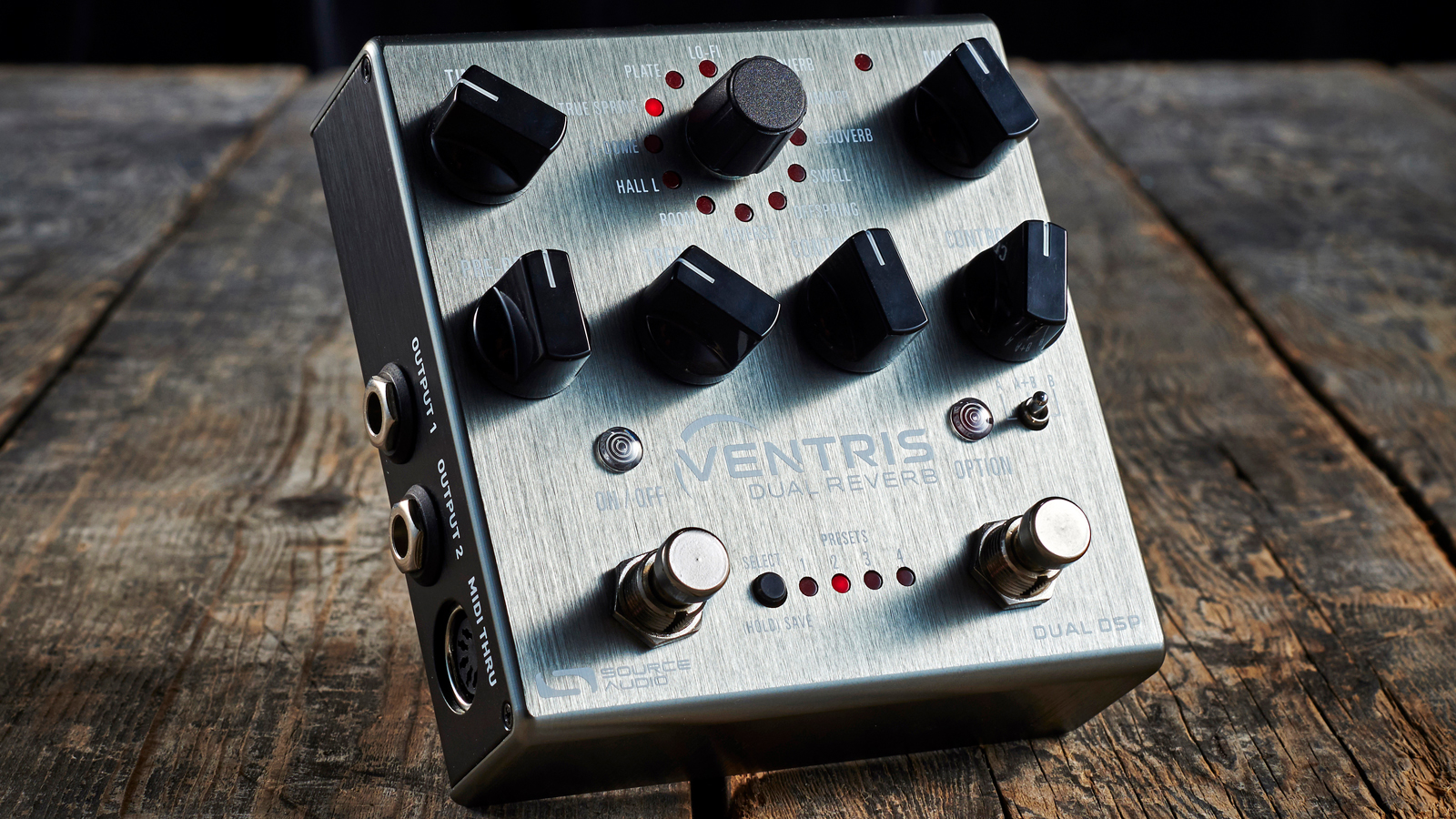
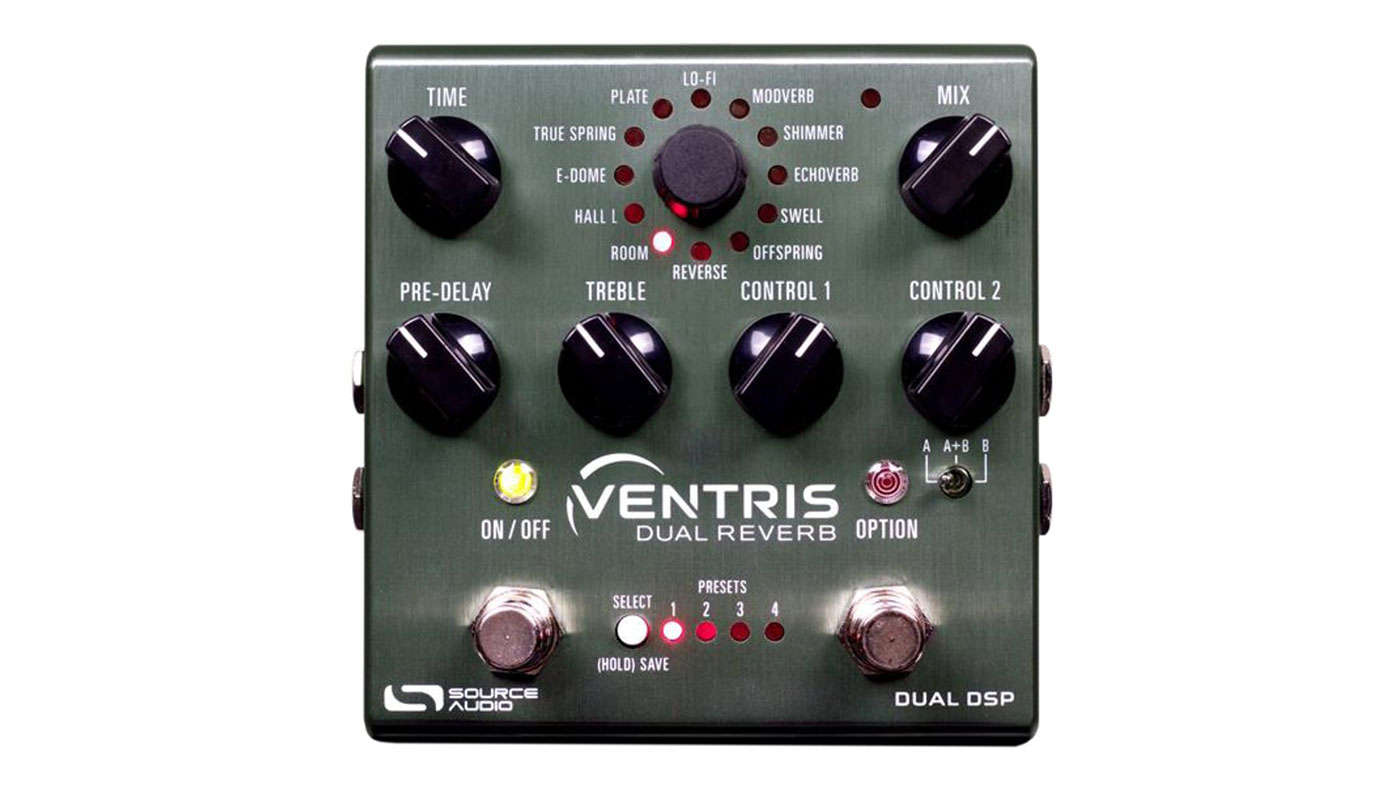
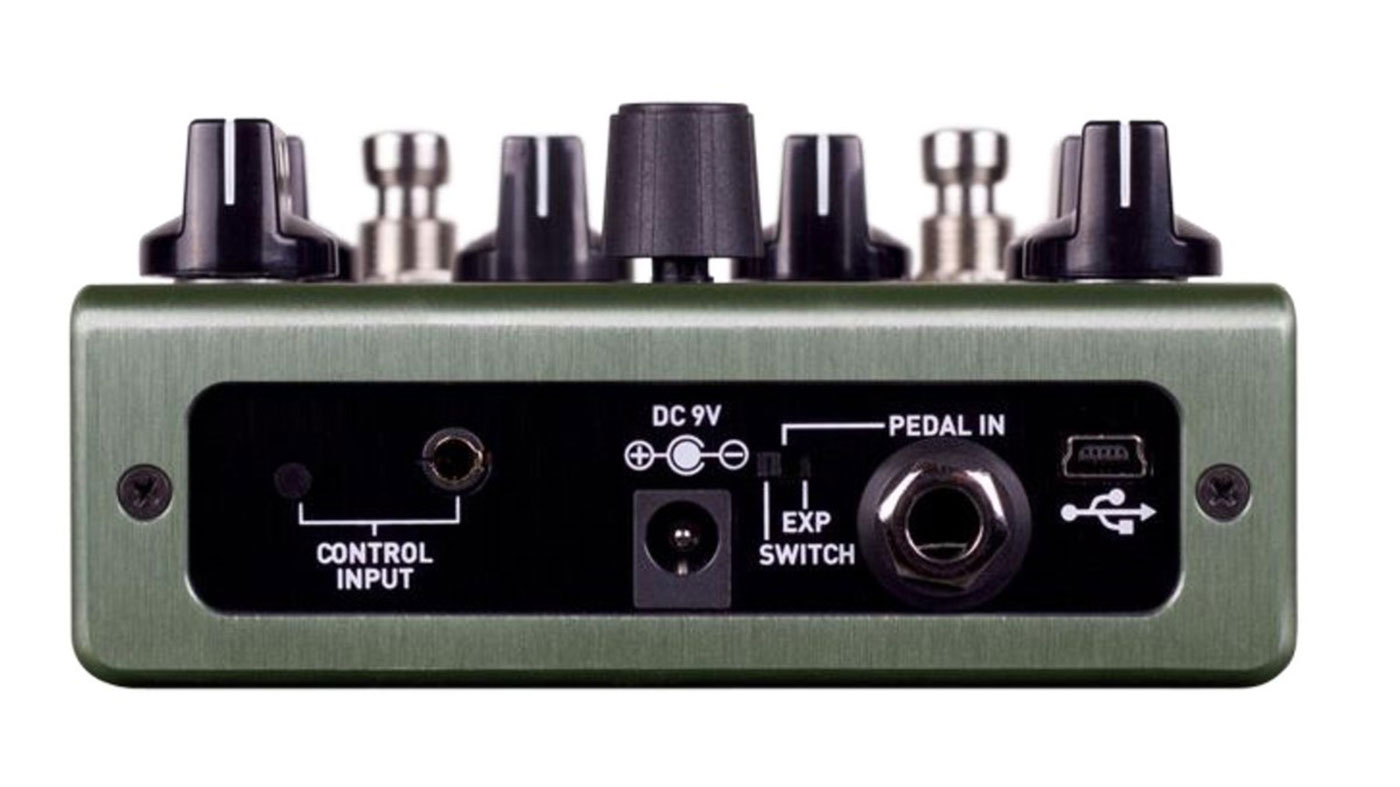
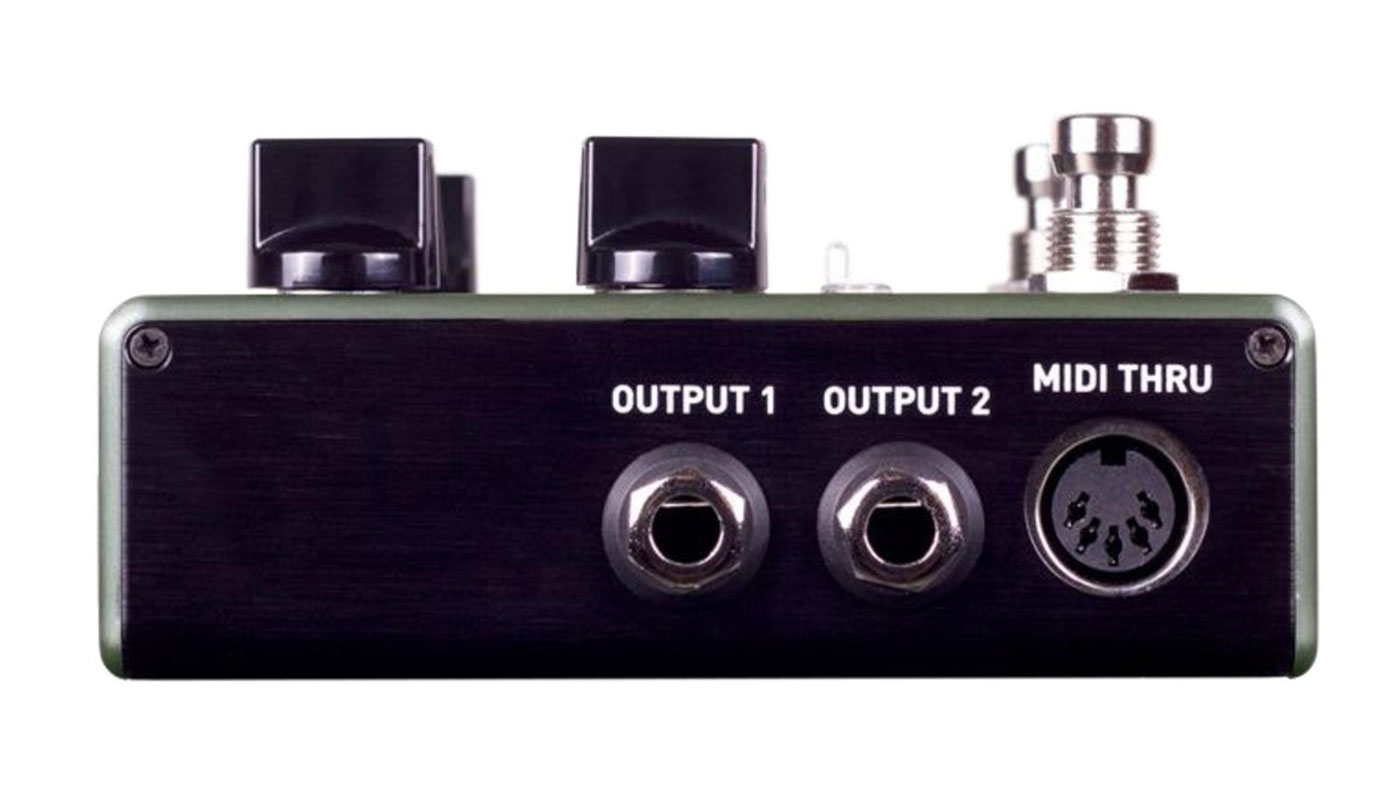
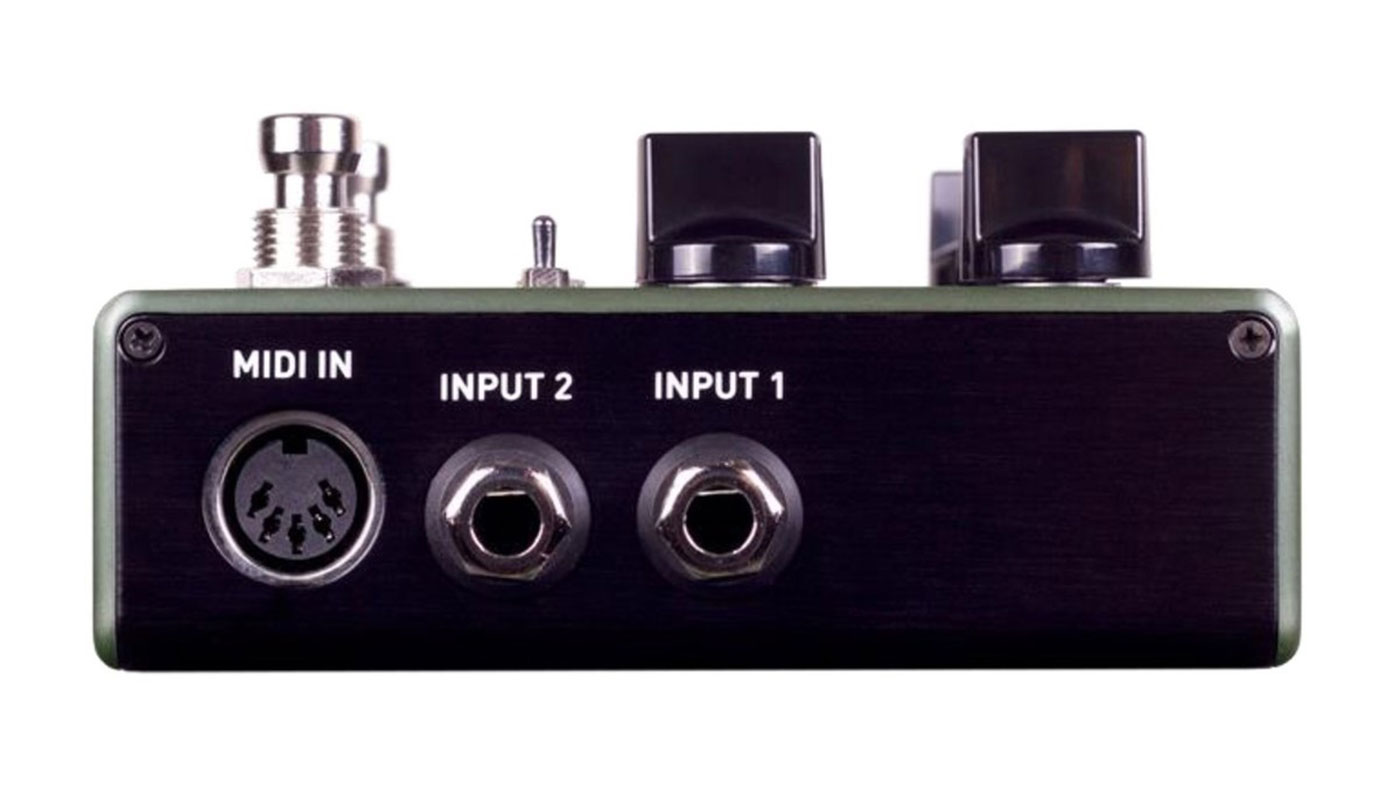
Specifications
Reasons to buy
Reasons to avoid
In the Ventris, finally we have a pedal with a relatively modest footprint that contains two totally independent reverbs that can be used singly or combined in parallel, in series or Left/Right - with various modes of mono and stereo operation being available.
There are 12 distinct reverb engines available from the front panel but, like previous Source Audio pedals, there are more available via the Neuro software. The outstanding impression of hearing the Ventris in action for the first time is the quality of its reverbs, but we also really like its pedalboard-friendly footprint and easy hands-on functionality.
You can get as complex as you like with the Neuro editing app, but if you want simplicity it’s there straight out of the box.
Read our full Source Audio Ventris review
Best for simplicity
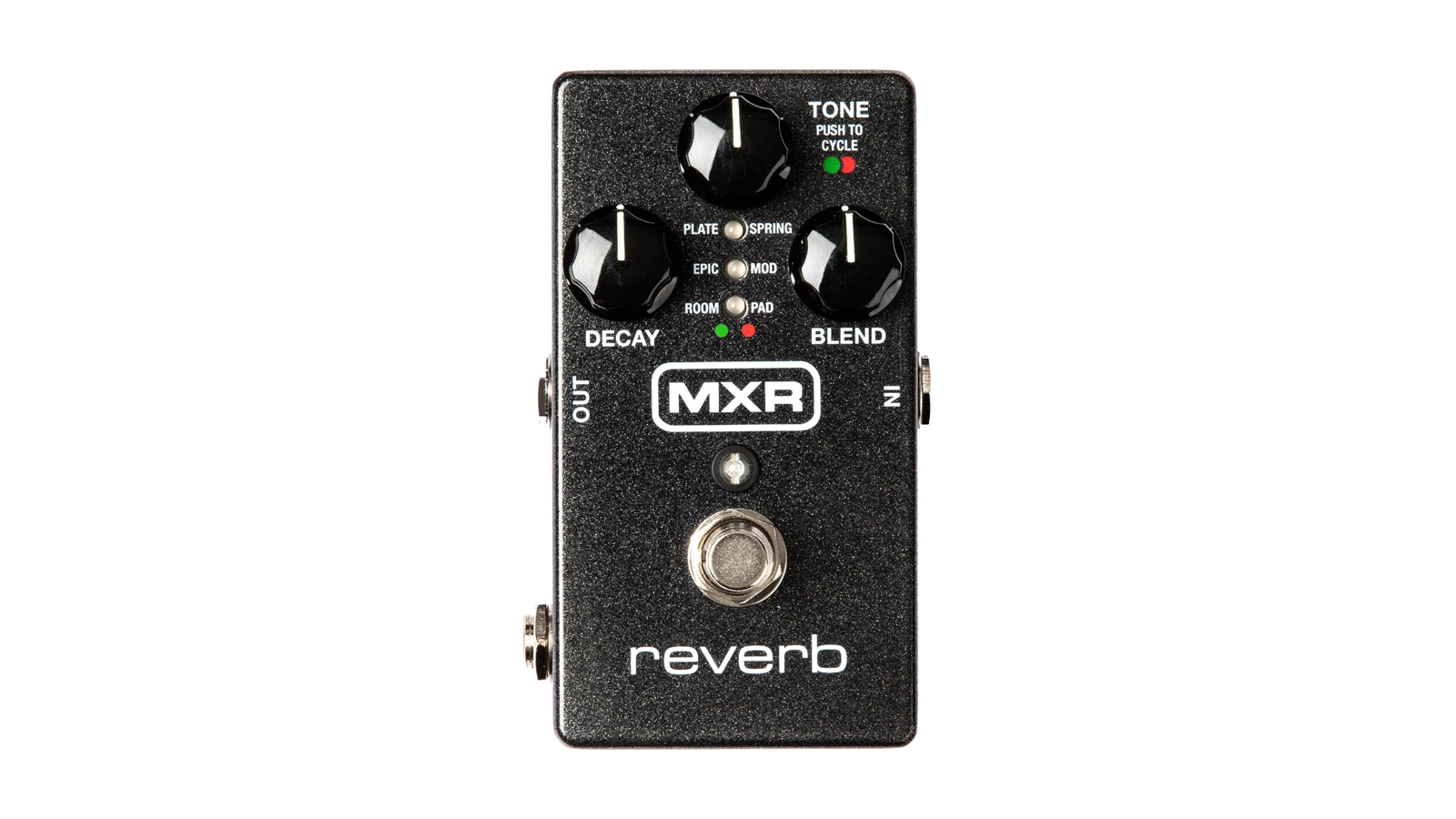
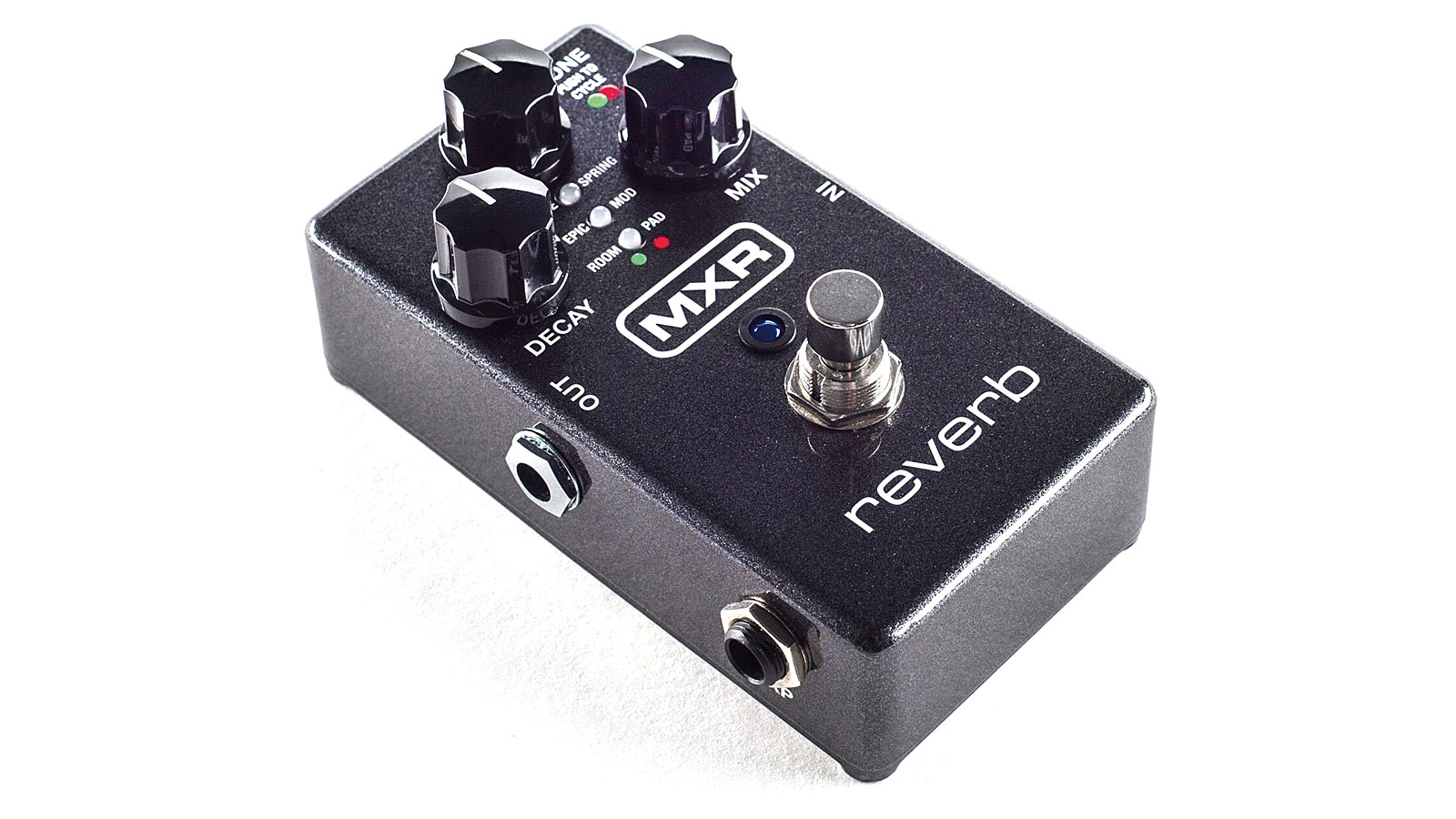
9. MXR M300 Reverb
Our expert review:
Specifications
Reasons to buy
Reasons to avoid
This compact pedal manages to pack in a lot of different sounds, whilst keeping the user interface simple and easy to use. There’s no menu-scrolling here - just three knobs, one of which is used as a push button to cycle through the reverb types.
There are six reverb types within the small confines of the M300, all of which sound phenomenal and are incredibly usable in a number of scenarios. The spring, room and plate settings are great for dialling in your classic, texture-adding ‘everyday’ reverbs, and the pad setting conjures up dreamy and ambient, almost synth-like sounds.
One of the best reverb pedals for those who want multiple high-quality reverb options, laid out in a simple way.
Read the full MXR Reverb M300 review
Best multi-reverb
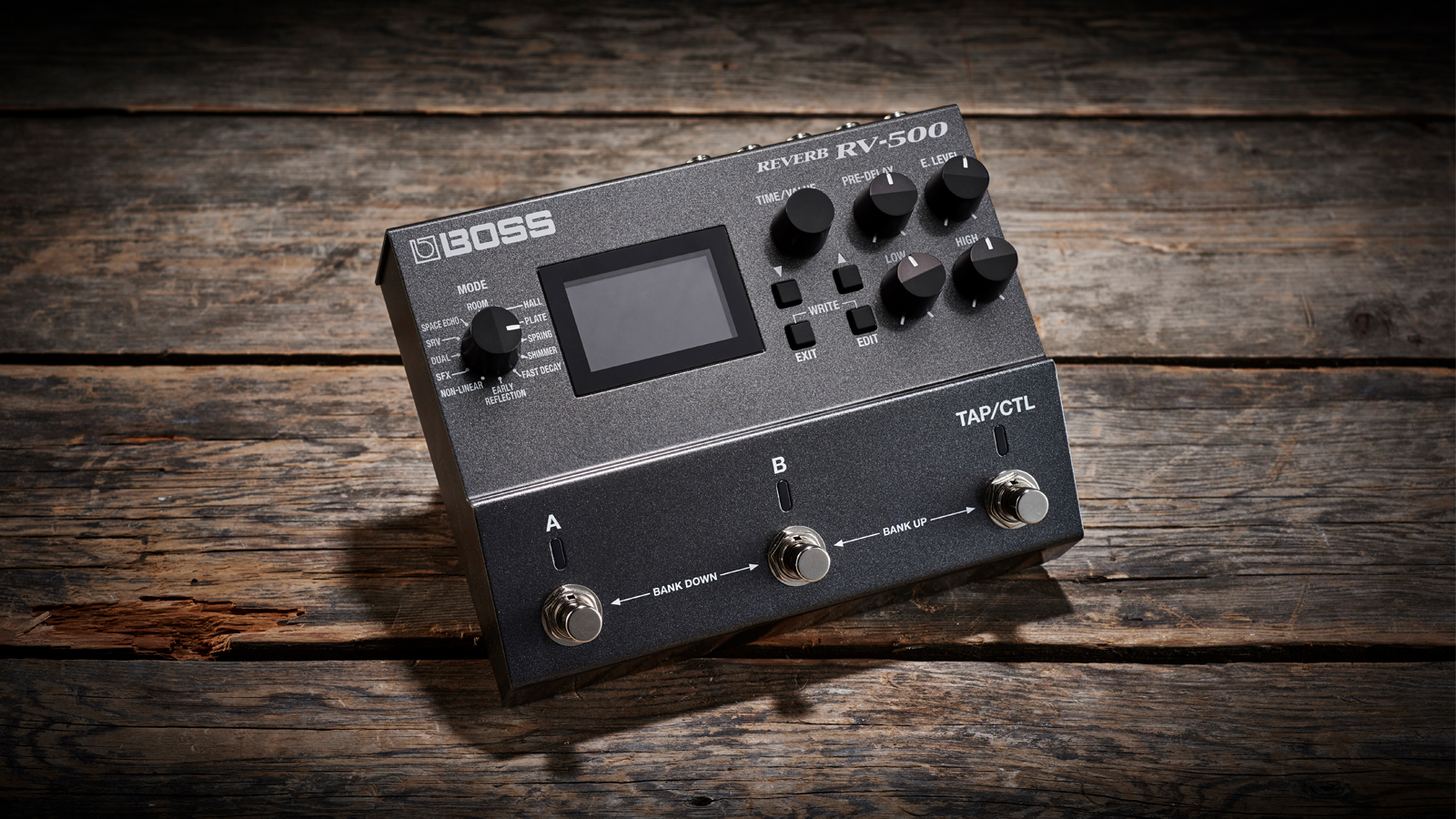
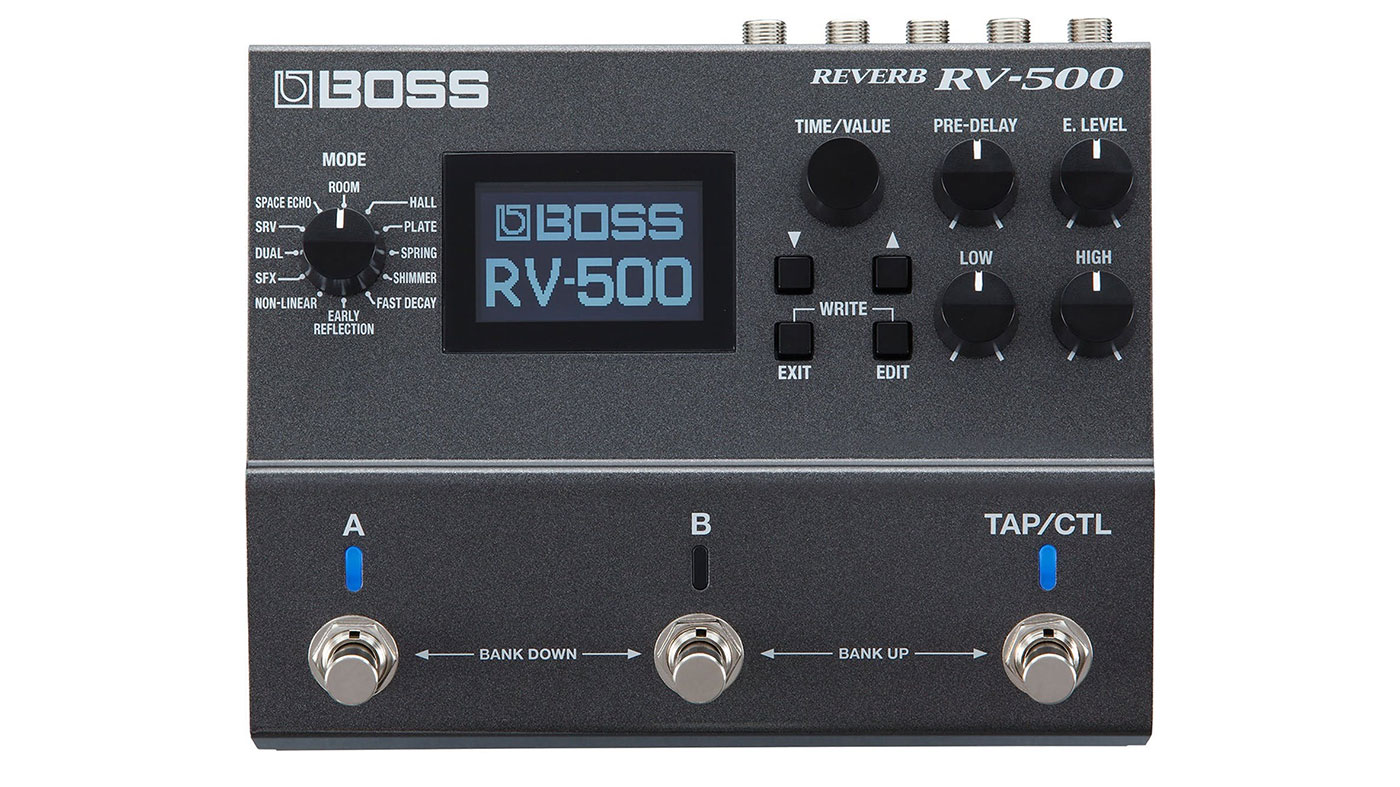


Specifications
Reasons to buy
Reasons to avoid
The RV-500 can be thought of as Boss' take on a BigSky-like one-stop reverb toolbox - and we found it to be a definite contender. With three footswitches, 12 reverb modes and digital delay options, not to mention a massive array of editable parameters, you won't run out of tonal options any time soon.
We get the classy reverbs of all varieties that Boss/Roland is capable of but they have also thrown in a Space Echo multi-head tape delay emulation for extra flexibility and an alternative to the delays with the reverbs.
There’s plenty to be explored in this immensely practical pedal that brings reverb and delay together. With all that memory and the various footswitching options it’s the perfect tool if you need different ambiences for different songs.
Read our full Boss RV-500 review
FAQs

How do I choose the right reverb pedal?
Buying a reverb pedal can be a serious investment, so it's imperative that you consider what it is you want to get out of it. Are you a vintage-inspired player that wants the tones of classic rock records? Or are you an experimental type that wants something completely unique? Some of the pedals in this article will do both of these things well, whereas others specialize in one particular sound.
How does a reverb pedal work?
A reverb pedal digitally simulates a space for your guitar sound to occupy. Similar to when you clap your hands in a large space, the sound is reflected back off the walls and into your ears, creating a sense of size. Whether it’s a small room with a short reflection or a huge hall with a big one, a reverb pedal can artificially give your guitar tone the same effect as if it was actually being played in that space.
You could use this to just add a slight sense of warmth and depth to a basic clean tone, or you could make it sound like it’s being blasted into your ears via the depths of the cosmos. It’s an incredibly versatile effect, and you’ll find it on the pedalboards of pretty much every guitar player.
Where should my reverb pedal go in the chain?
There are no rules on how you should order your pedals and experimentation is one of the best ways to go about creating a signature sound. That said, for the most part, guitar players put their reverb pedals at the end of the chain, so it's usually the last pedal before it goes out to the amplifier.
This is because reverb is a time-based effect, so putting it in front of other effects can make your whole signal sound like it’s really far away. This might be a cool effect you could use for a certain style of music and some guitarists like to put reverbs ahead of their fuzz or distortion pedals to create unique, droning guitar tones.
What is the difference between digital and analog reverb pedals?
Reverb is typically a digital effect, and this is because the sound of an analog reverb is created with a physical space. Original plate reverbs required large sheets of metal that were vibrated. Analog spring reverbs use metal springs to create their unique tone. Echo chambers required that sounds be played into a physical space, captured with a microphone, then input back alongside the dry signal to create the sense of space.
This is why you won’t find many analog reverb pedals. Unless you wanted to cart around a bunch of metal plates with you there would be no physical way to actually do it! There are some pedals that have a physical spring inside them, like those from Danelectro and Gamechanger Audio, but these are few and far between. For the most part, if you want an analog reverb sound, you’ll either need to rely on an amplifier with a spring reverb built in, or stick to digital.
Are there any affordable reverb pedals?
Reverb is one of the more expensive effects out there. That’s because they are created through the use of algorithms and powerful computer chips. Carrying out the myriad amount of calculations required to accurately simulate your guitar tone occupying a space, in real-time with no latency requires tremendous processing power and that’s before you start adding in modulation and octave effects to the tails. There are some reverb pedal bargains out there, but for this type of pedal, you really do get what you pay for.
Find out more about how we test music gear and services at MusicRadar.
How we chose the best reverb pedals for this guide

Here at MusicRadar, we are experts in our field, with many years of playing, creating and product testing between us. We live and breathe everything music gear related, and we draw on this knowledge and experience of using products in live, recording and rehearsal scenarios when selecting the products for our guides.
When choosing what we believe to be the best reverb pedals available right now, we combine our hands-on experience, user reviews and testimonies and engage in lengthy discussions with our editorial colleagues to reach a consensus about the top products in any given category.
First and foremost, we are musicians, and we want other players to find the right product for them. So we take into careful consideration everything from budget to feature set, ease of use and durability to come up with a list of what we can safely say are the best reverb pedals on the market right now.
Find out more about how we test music gear and services at MusicRadar.
Related buyer's guides
MusicRadar's got your back
- Manage your power with the best pedalboard power supplies
- Undecided? These are the best guitar effects pedals in all categories
- These are the 10 best chorus pedals
- These are the best tremolo pedals
- The best guitar amps under $/£1,000
- The best budget guitar amps under $500/£500
- On a tight budget? Here are the best cheap guitar pedals
Want all the hottest music and gear news, reviews, deals, features and more, direct to your inbox? Sign up here.
Chris Corfield is a journalist with over 12 years of experience writing for some of the music world's biggest brands including Orange Amplification, MusicRadar, Guitar World, Total Guitar and Dawsons Music. Chris loves getting nerdy about everything from guitar and bass gear, to synths, microphones, DJ gear and music production hardware.
- Matt McCrackenJunior Deals Writer
- Rob LaingReviews Editor, GuitarWorld.com and MusicRadar guitars
- Richard Blenkinsop
